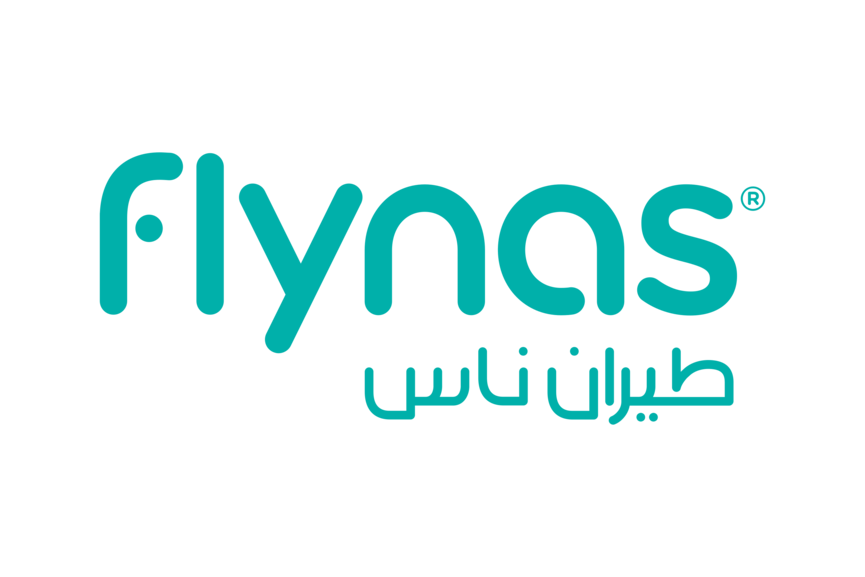The Saudi Discovery
Location : Saudi Arabia - Riyadh
a grand circle tour around The Arabian Peninsula, tailor made to get in touch with Saudi through a native eye. The past, present and future is what you are going to see, feel and enjoy with every step we cross in our route.
Starting with a warm welcome among arrival to the capital city of Riyadh, with all what it has to offer.
Program ( 22 days )
-
Day 1
Arrival to Riyadh
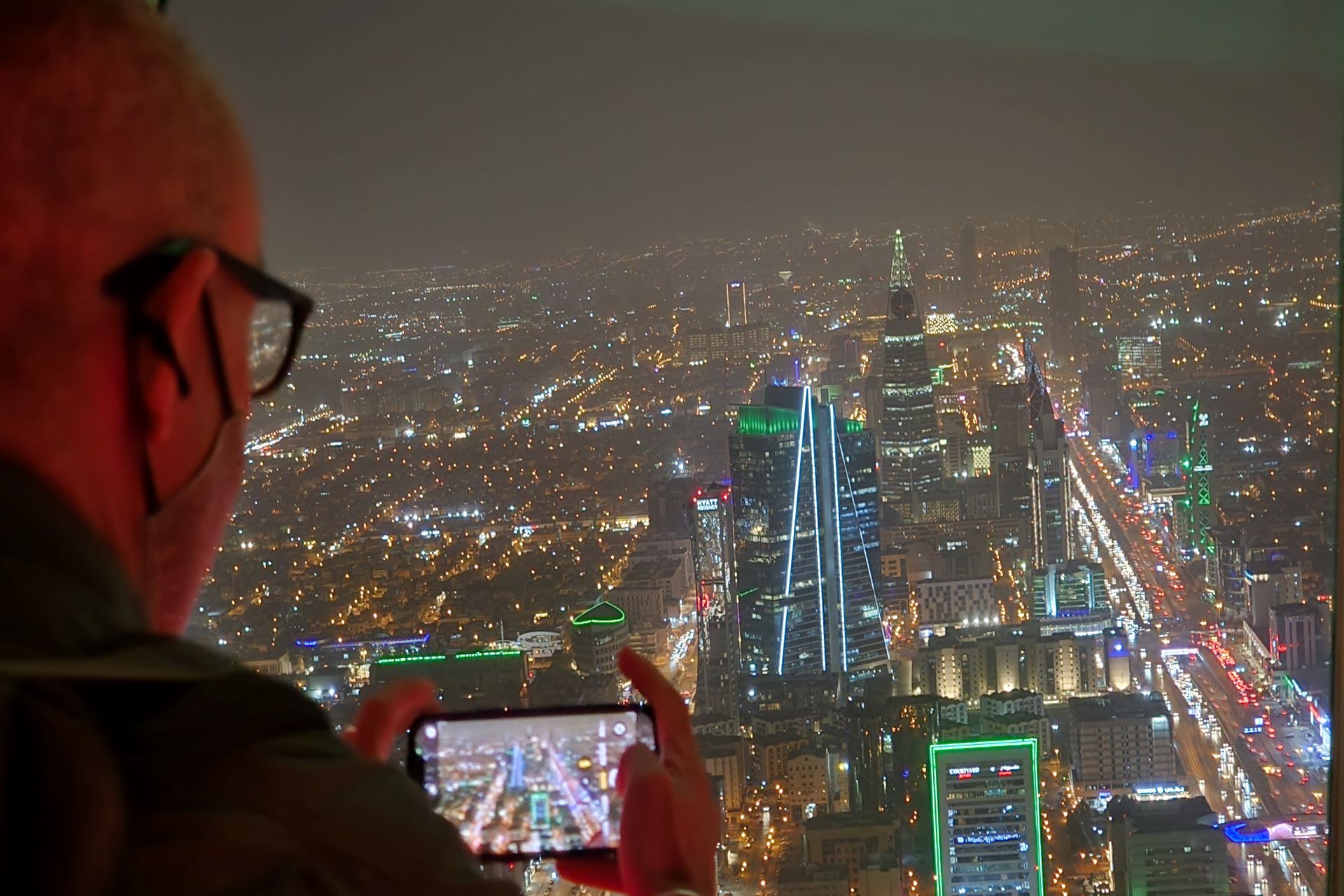 Welcome to Riyadh.
Welcome to Riyadh.
Meet & assist, transferee by an A/C car to your hotel.
Welcome to one of the wealthiest cities in the world, home to Saudi Arabia's best museum, a World Heritage Site that relates the Kingdom's genesis story, and some of the finest hotels and restaurants in the country.
Overnight in Riyadh hotel.
-
Day 2
Historical Riyadh
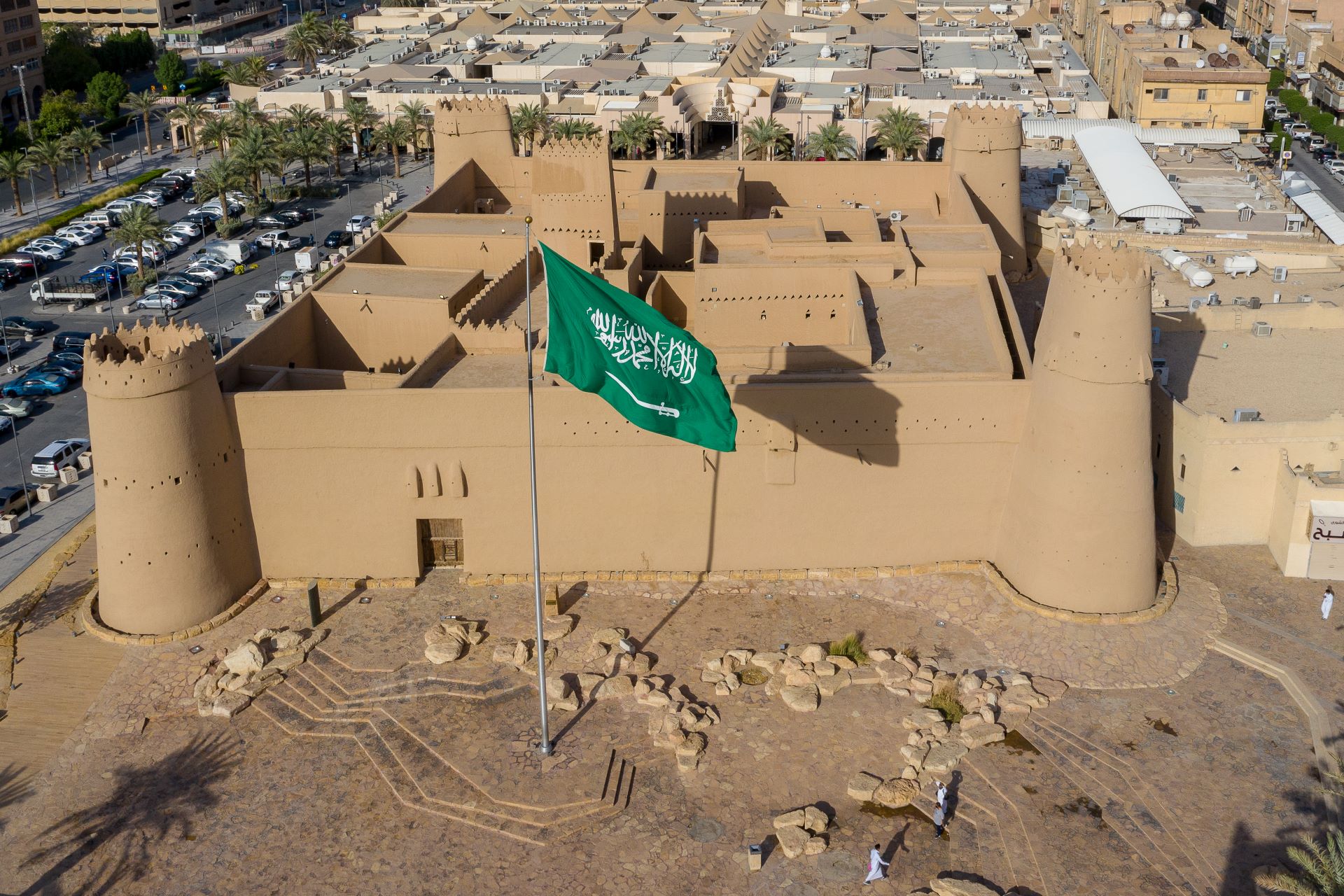 After breakfast Start your tour exploring the country's capital.
After breakfast Start your tour exploring the country's capital.
visiting The National Museum of Saudi Arabia. Established in 1999, It is part of the King Abdul-Aziz Historical Centre in Riyadh. driving on Makkah Road towards old Camel Caravan Trail, where one can enjoy walk on old camel tracks which is always very fascinating.
Continue to Masmak Fort, enjoy a step back in time and explore Saudi Arabia’s roots. A short documentary also re-enacts the capture of the fortress by King Abdul Aziz, whose spearhead you can still see embedded in its wooden gate.
visit Murraba palace, among the most important palaces built by King Abdul-Aziz. this Palace was to accommodate his family, it was built on the local traditional Najid style by using local building material only.
Dira Souq is famous for its variety of old copper and brass objects including silver daggers, silver Bedouins Jewelry and dresses. While entering from the main access point, visitors always smell sandal wood fragrance. Dira Souq is a great place to purchase antique carpets and other useful Saudi heritage antiques.
Then visit The National Museum of Saudi Arabia. Established in 1999, It is part of the King Abdul-Aziz Historical Centre in Riyadh.
Overnight at Riyadh hotel.
-
Day 3
Riyadh - Qassim
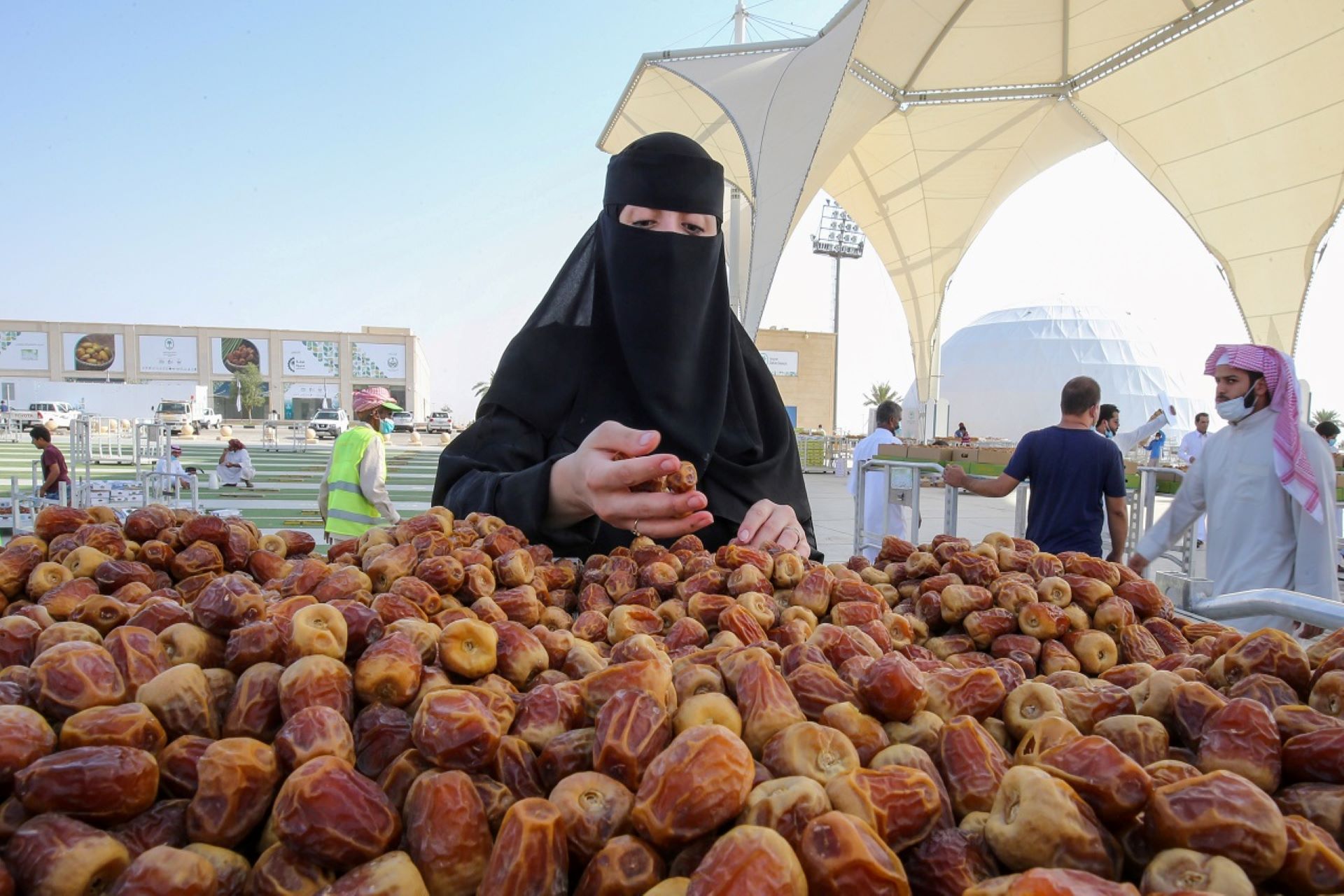 Today you will start the journey through the desert. Along the way you will visit the 'mud village' Ushaiger. The village has seven neighborhoods and has many palm trees and orchards that are beautifully integrated into the maze of paths.
Today you will start the journey through the desert. Along the way you will visit the 'mud village' Ushaiger. The village has seven neighborhoods and has many palm trees and orchards that are beautifully integrated into the maze of paths.
You have the opportunity to walk along the shady and charming paths that wind between the 400 mud houses and 25 mosques that the village houses. Some of the houses still bear the name of the families that originally lived here.
Then you go to Qassim. The rest of the day we have time to explore Qassim, visit the lively Souq and the date market, the city is surrounded by sand dunes.
Overnight in Qassim hotel.
-
Day 4
Qassim - Camel Market - Hail
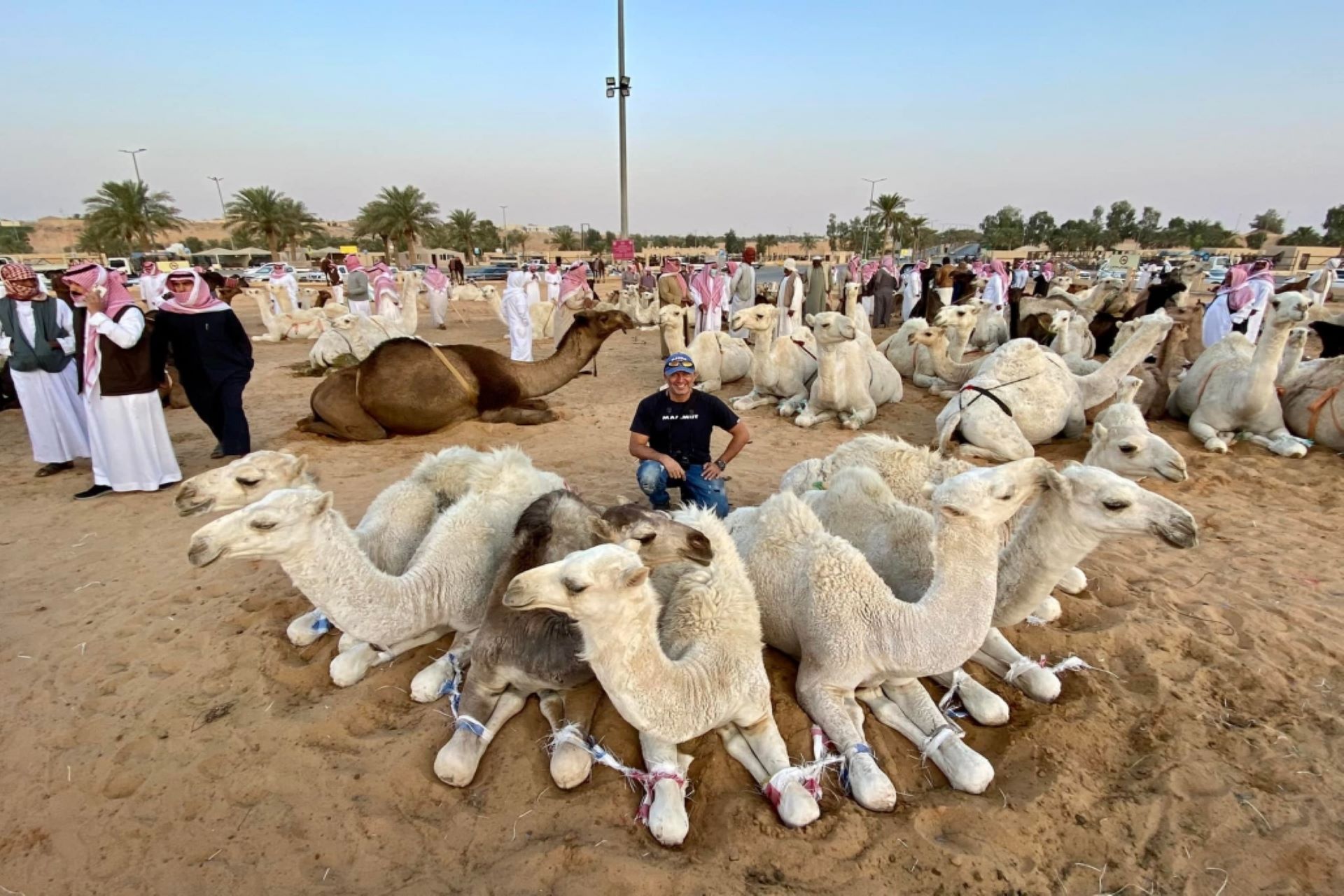 The Largest Camel Market in the World.
The Largest Camel Market in the World.
The Al Qassim Camel Market is the largest camel market in the world and is situated on the outskirts of Buraydah in Al-Qassim and is a spectacular sight with thousands of camels for sale and hundreds of Saudi Men looking to buy them. Many traditional handcrafts are also available nearby including hand crafted leather goods. The market starts at 6:00AM and apart from camels there are also plenty of goats and sheep for sale. The sales finish by 10:00AM so an early start is required to see the action. Many Bedouins are present at the market both buying and selling camels which are the one humped Dromedary type that have been domesticated thousands of years.
Now we drive from Qassim to Hail. For centuries, Hail has been the gateway to the desert. Pilgrims from the north on their way to Mecca and Medina met here with traders who were on their way to the Middle East from the south of the Arabian Peninsula. From the city you can see the Aarif citadel on a mountain. This mud fort built in the in the 17th century by the Al-Ali family and further modified by subsequent rulers. Throughout the city there are various forts and palaces that now mainly serve as museums or libraries. Some of these monuments date from the time of Ottoman rule. You visit the Earif Fort and the Qashlah Fort, where the latter can only be viewed from outside.
Overnight in Hail hotel.
-
Day 5
Hail – Jubbah – Al Jawf
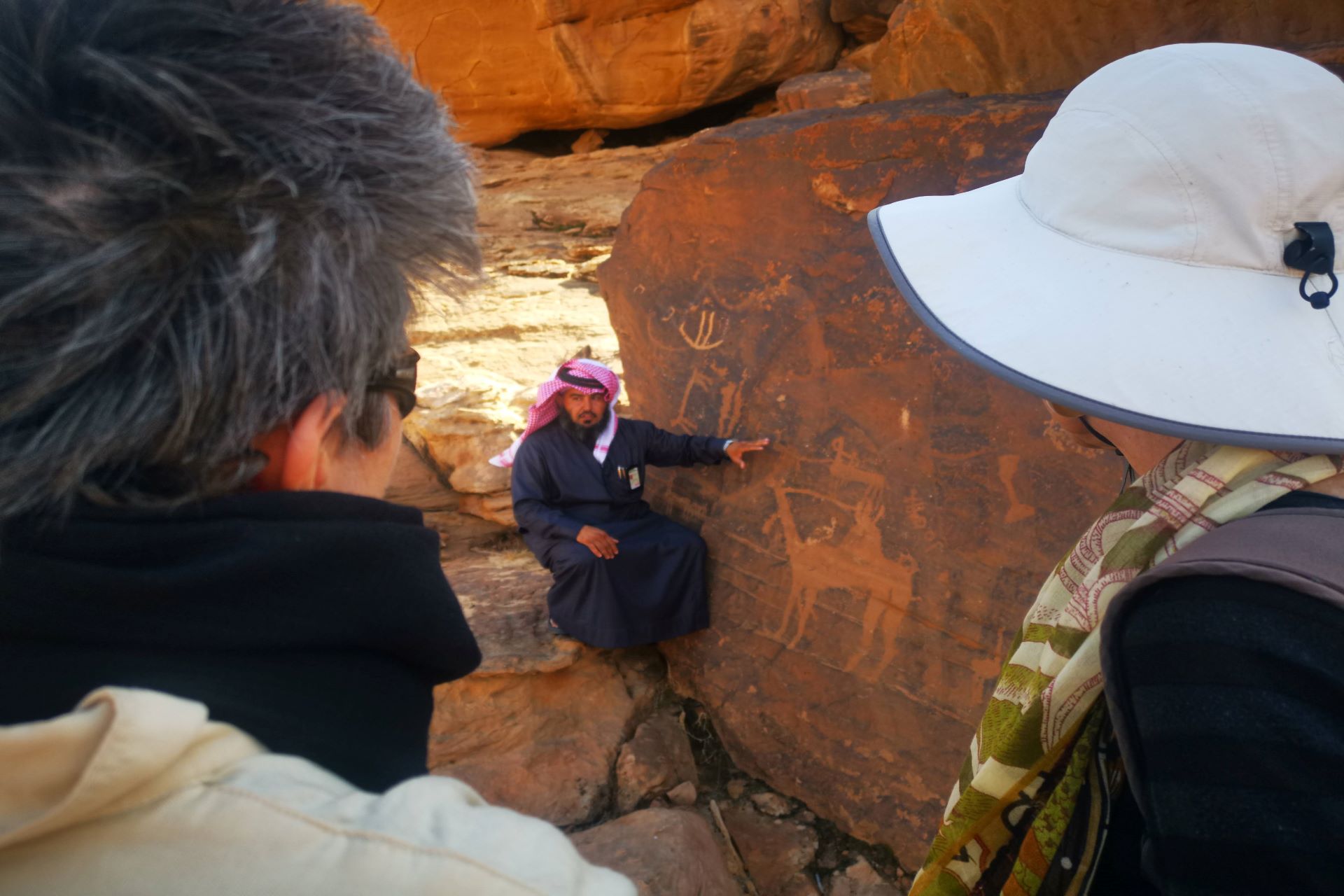 After breakfast we head to Jubbah, the most famous rock art site in Saudi Arabia, which is designated a UNESCO World Heritage Site. The carvings that can be found on the Jibal Umm Sinman cover a wide range of representations as well as a large period of time with some carving possibly being 10 000 years old.
After breakfast we head to Jubbah, the most famous rock art site in Saudi Arabia, which is designated a UNESCO World Heritage Site. The carvings that can be found on the Jibal Umm Sinman cover a wide range of representations as well as a large period of time with some carving possibly being 10 000 years old.
Jubbah is host of the two most emblematic carvings in Saudi Arabia.
The first one is a character dominating another smaller one.
The second one is a chariot pulled by two horses.
Continue to the oasis of Dumat Al-Jandal, it is the largest and best-known oasis at the northern limit of the great al-Nafud desert. Visit of Qasr Marid, which means “the rebel” in Arabic, stands on a natural limestone outcrop overlooking the valley where the ancient oasis lies.
Umar bin al-Khattab Mosque, is certainly the most emblematic monument in the Al Jawf province, Pyramidal in shape, the minaret has five stories rising to a height of about 15 meters.
Rajajil is a mysterious ancient site located on a sandstone terrace, the ‘enigma’ of the standing stones of the site attracted popular explanations, including stories of fear and superstition, or the understanding that the site had astronomical functions.
Overnight in Al Jawf hotel.
-
Day 6
Al Jawf - Tabuk
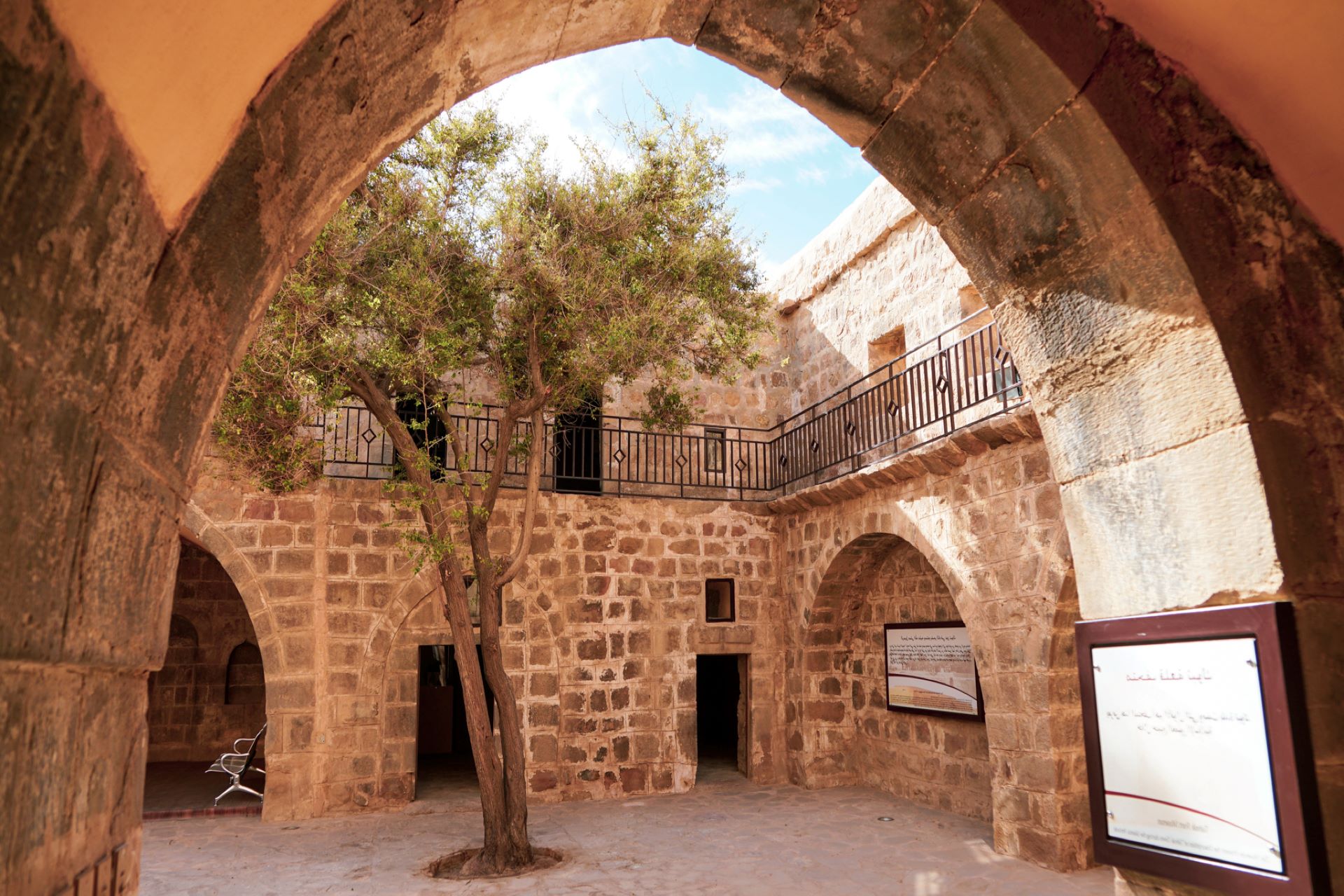 Tabuk Province has some of the richest history of the whole Arabian Peninsula and deserves a museum to highlight its heritage. Since 2019 visitors have been able to admire some fascinating artifacts exhibited in the old Hijaz Railway Station in Tabuk city that was refurbished for this purpose. The elegant building has the architecture of the early twentieth and twenty-first centuries mixing together to offer a journey from prehistory to modern times and even into the future, with the city of Neom that will soon rise in Tabuk Province.
Tabuk Province has some of the richest history of the whole Arabian Peninsula and deserves a museum to highlight its heritage. Since 2019 visitors have been able to admire some fascinating artifacts exhibited in the old Hijaz Railway Station in Tabuk city that was refurbished for this purpose. The elegant building has the architecture of the early twentieth and twenty-first centuries mixing together to offer a journey from prehistory to modern times and even into the future, with the city of Neom that will soon rise in Tabuk Province.
Visit of Tabuk Castle, is an ancient castle which dates back to 1559, The castle has been rehabilitated and transformed into a museum open to all visitors. It was constructed to protect the water station as well as for security and surveillance purposes and was one of the stations on the Levant-Medina Haj road to welcome the pilgrims.
Overnight Tabuk hotel.
-
Day 7
Disah Valley – Al Shaq - Tabuk
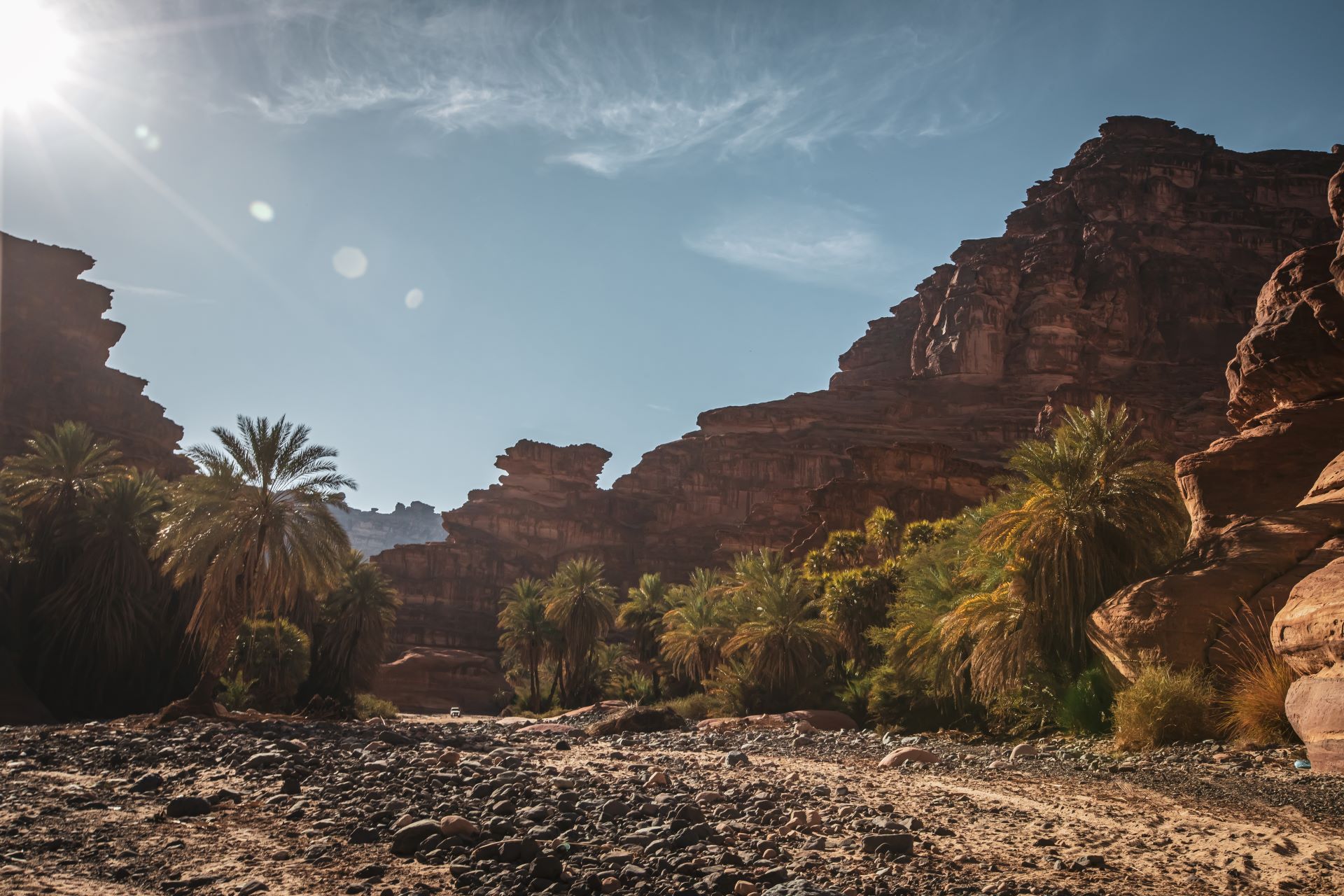 The natural jewel of Saudi Arabia, Wadi Qaraqir - also known as Wadi Disah - is a 15-Km-long canyon running through the Jebel Qaraqir, a heaven palm oasis with crystal clear running water. This natural wonder was for a long time a well-kept secret among explorers, before the road leading to the nearby city of Disah was built and satellite images were available to the public, which made it quite difficult to find and reach. Today, this natural wonder has become one of the must-see places in Saudi Arabia.
The natural jewel of Saudi Arabia, Wadi Qaraqir - also known as Wadi Disah - is a 15-Km-long canyon running through the Jebel Qaraqir, a heaven palm oasis with crystal clear running water. This natural wonder was for a long time a well-kept secret among explorers, before the road leading to the nearby city of Disah was built and satellite images were available to the public, which made it quite difficult to find and reach. Today, this natural wonder has become one of the must-see places in Saudi Arabia.
Among all there is a more discreet but fascinating place, Al-Shaq. This name means the tear (or rip) which makes sense as here the earth has been literally torn apart by tectonic forces. That is the reason why this place is also known as the Great Canyon of Saudi Arabia.
On the way a large stone circles appear on the ground that are probably another example of the numerous Bronze Age (3rd millennium BC) tombs of the Arabian Peninsula. But once past those tombs, what was just a shallow dry valley on the south becomes a crack in the ground that keeps on spreading until becoming a wide and impressively deep canyon. It is actually possible to be at the exact place where the breach appears and stand with feet on both sides of it. A track allows relatively easy access to the northern part of the canyon where the impressive scale of Al-Shaq is revealed. An overhang offers a perfect perspective for a souvenir picture but be careful not to get too close as rocks may fall some 300 meters lower!
Back to Tabuk for overnight.
-
Day 8
Medyan- Tayib Ism – Magna – Ras Al Sheikh Hameed – Tabuk
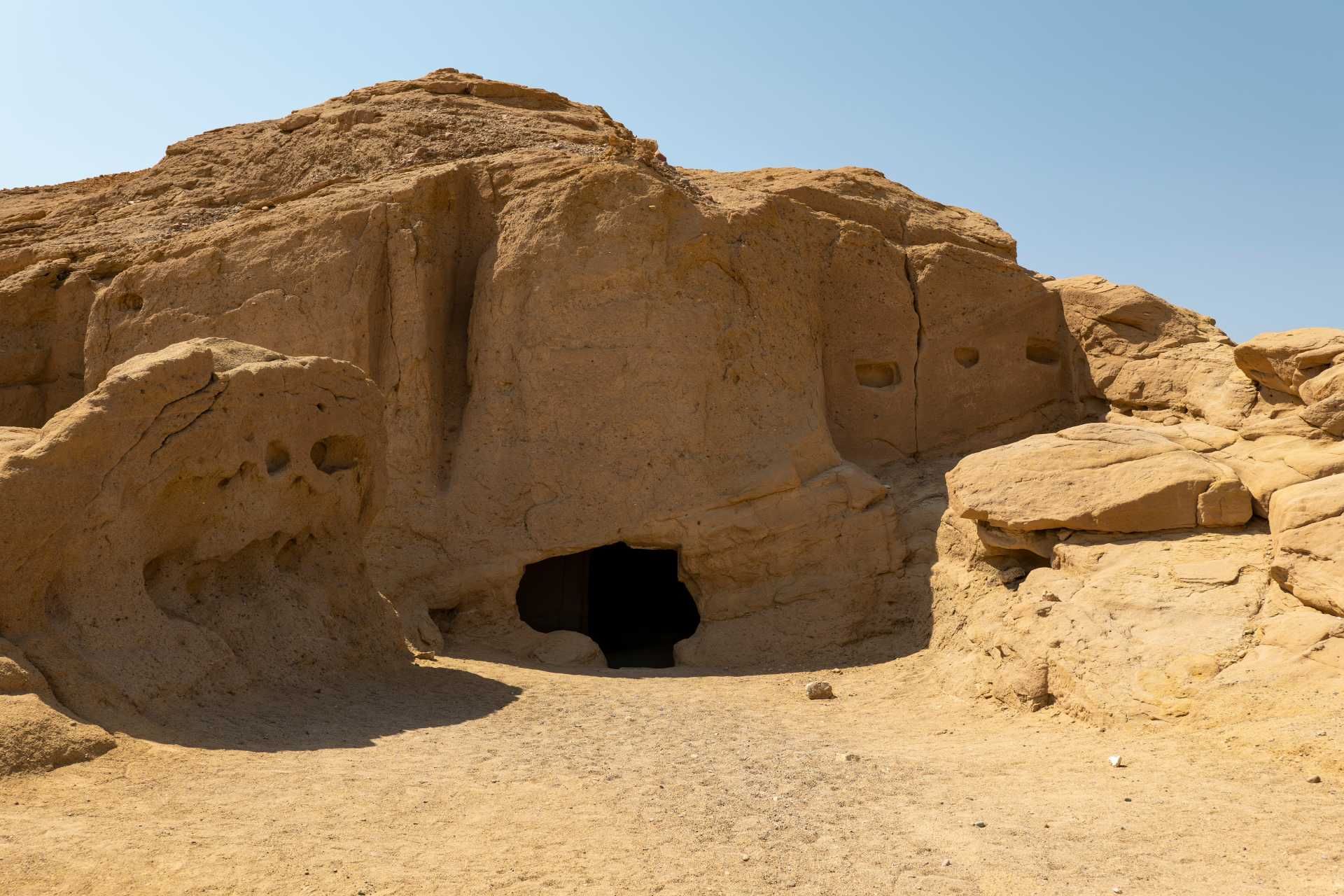 Dated back to the end of the 2nd millennium BCE, Medyan is known for being the place where the Prophet Moses sought refuge after fleeing Egypt. There he met the Prophet Jethro who recognized in Moses a pure soul and gave him one of his daughters. Moses then lived for ten years with his wife and father-in-law in Medyan before returning to Egypt to free its people from the Pharaoh Ramses II.
Dated back to the end of the 2nd millennium BCE, Medyan is known for being the place where the Prophet Moses sought refuge after fleeing Egypt. There he met the Prophet Jethro who recognized in Moses a pure soul and gave him one of his daughters. Moses then lived for ten years with his wife and father-in-law in Medyan before returning to Egypt to free its people from the Pharaoh Ramses II.
Tayeb Ism (The valley of Moses) is one of the magical natural wonders of Saudi Arabia that takes visitors by surprise. This incredible natural feature of Tabuk Province is located on the Gulf of Aqaba, just 15 Km north of the coastal town of Maqna.
(The wells of Moses) Maqna is a charming coastal town located on the Gulf of Aqaba that faces Egypt and the Sinai mountains, clearly visible from it. But the town is famous for its wells that witnessed an important episode in the life of the Prophet Moses.
The western tip of Mainland Saudi, Ras Al-Sheikh Hameed is a beautiful sandy cape located in Tabuk Province, at the junction between the Red Sea and the Gulf of Aqaba. The sand banks of the Ras Al-Sheikh Hameed used to be the westernmost point of the Kingdom of Saudi Arabia until the cession of Tiran Islands by Egypt to Saudi Arabia in 2017. Thus, it is today only the westernmost point of the Saudi Arabian mainland.
Overnight in Tabuk hotel.
-
Day 9
Tabuk – Hegra
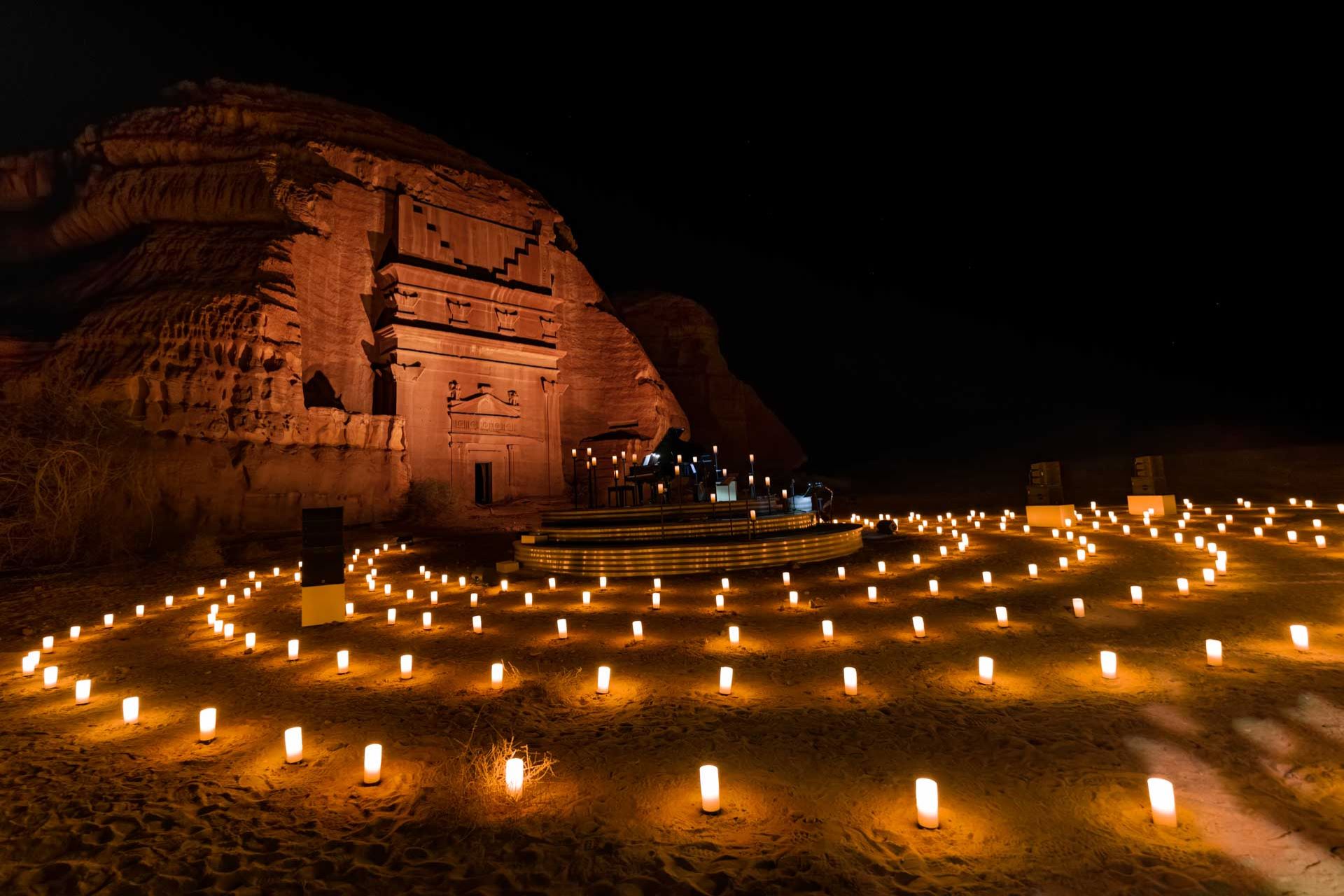 Hegra is the most iconic historical site of the Kingdom of Saudi Arabia and the first to be listed as a UNESCO Word Heritage, back in 2008. The Nabateans, called it Hijra (as it appears in some ancient inscriptions at the site), and the Romans used to call it Hegra.
Hegra is the most iconic historical site of the Kingdom of Saudi Arabia and the first to be listed as a UNESCO Word Heritage, back in 2008. The Nabateans, called it Hijra (as it appears in some ancient inscriptions at the site), and the Romans used to call it Hegra.
The Nabatean people were Arab merchants actively involved in the frankincense trade originating from ancient Yemen from which they gained their great wealth. The Nabatean Kingdom developed from the 2nd century BC until the beginning of the 2nd century BC. The extensive settlement of the site took place during the 1st century AD, when it came under the rule of the Nabatean king Aretas IV Philopatris (Al-Harith IV) (9 – 40 BC), who made Hegra the kingdom's first capital, before Petra, located 500 kilometers to the north.
In the early 19th century BC, the Ottomans built a railway station at Hegra that was along the Hejaz Railway linking Damascus to the holy city.
Overnight Hegra Camp.
-
Day 10
Al Ula
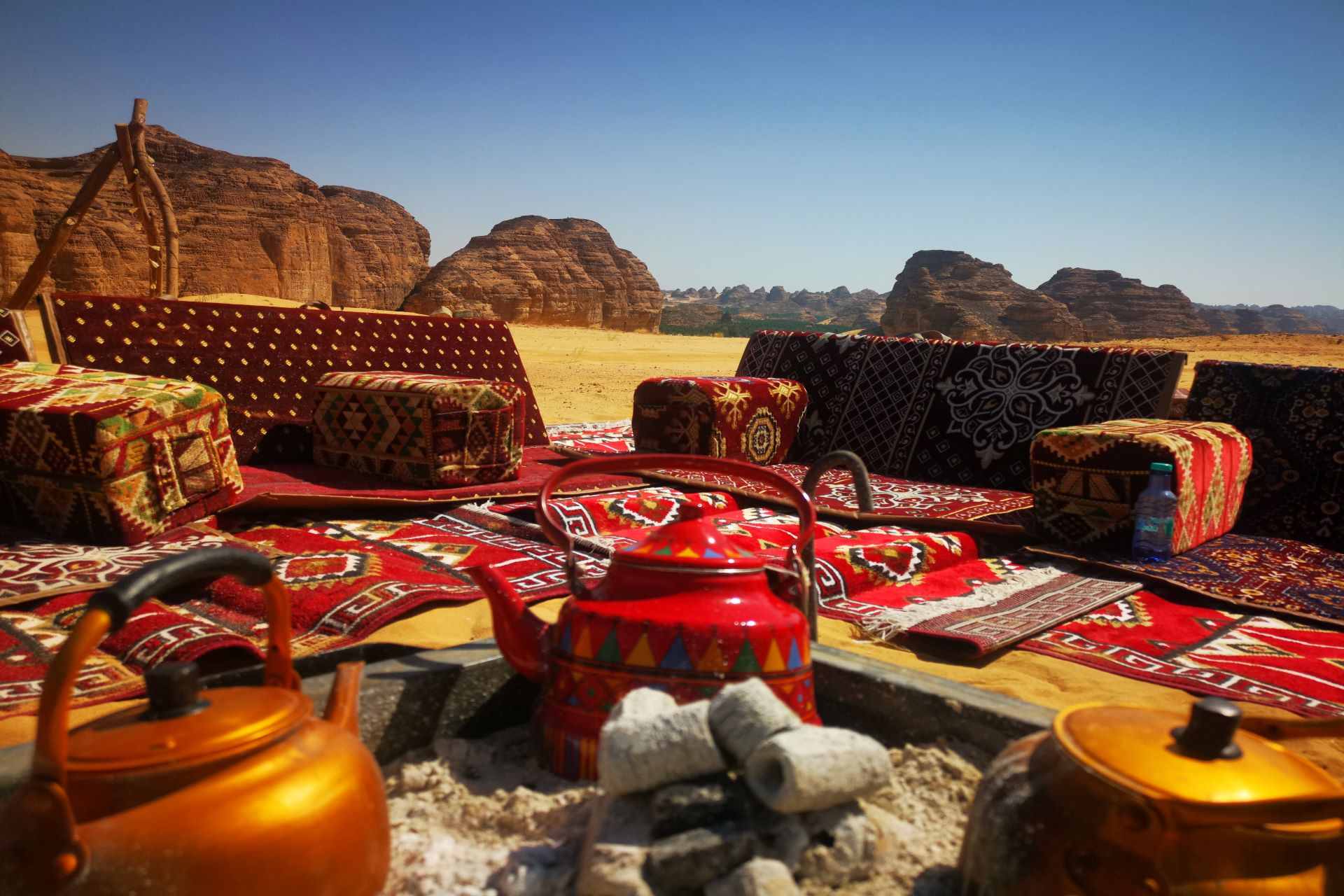 After breakfast we drive to Al Ula, the birthplace of two ancient Arabian kingdoms. During the 1st millennium BC, Al-Ulla saw the rise of the ancient city of Dadan that became the capital of two successive kingdoms, Dadan and Lihyan, that ruled over the northwest of the Arabian Peninsula.
After breakfast we drive to Al Ula, the birthplace of two ancient Arabian kingdoms. During the 1st millennium BC, Al-Ulla saw the rise of the ancient city of Dadan that became the capital of two successive kingdoms, Dadan and Lihyan, that ruled over the northwest of the Arabian Peninsula.
A small fort still stands in the middle of the Heritage Village of Al-Ulla and is known as Musa Ibn Nusayr Fort. It was probably a fortified structure as early as the Dadanite or Lihyanite times as some Dadanitic inscriptions were carved on the rock where the fort was built.
Al-Ula Heritage Village (ghost town), also known as Ad-Deerah, is the traditional Arabian village where people of the oasis moved some 8 centuries ago and inhabited until the 20th century. It was built on a higher part of the valley in order to be clear from the floods that can occur during the raining season. At its maximum expansion the town contained over 1 000 houses that were built adjacent to one another thereby forming a wall around the town to defend the population.
Overnight in Hegra camp.
-
Day 11
Al Ula – Khaybar - Medina Today we move toward the last great ancient oasis of Khaybar about 200 Km south. Khaybar is surrounded
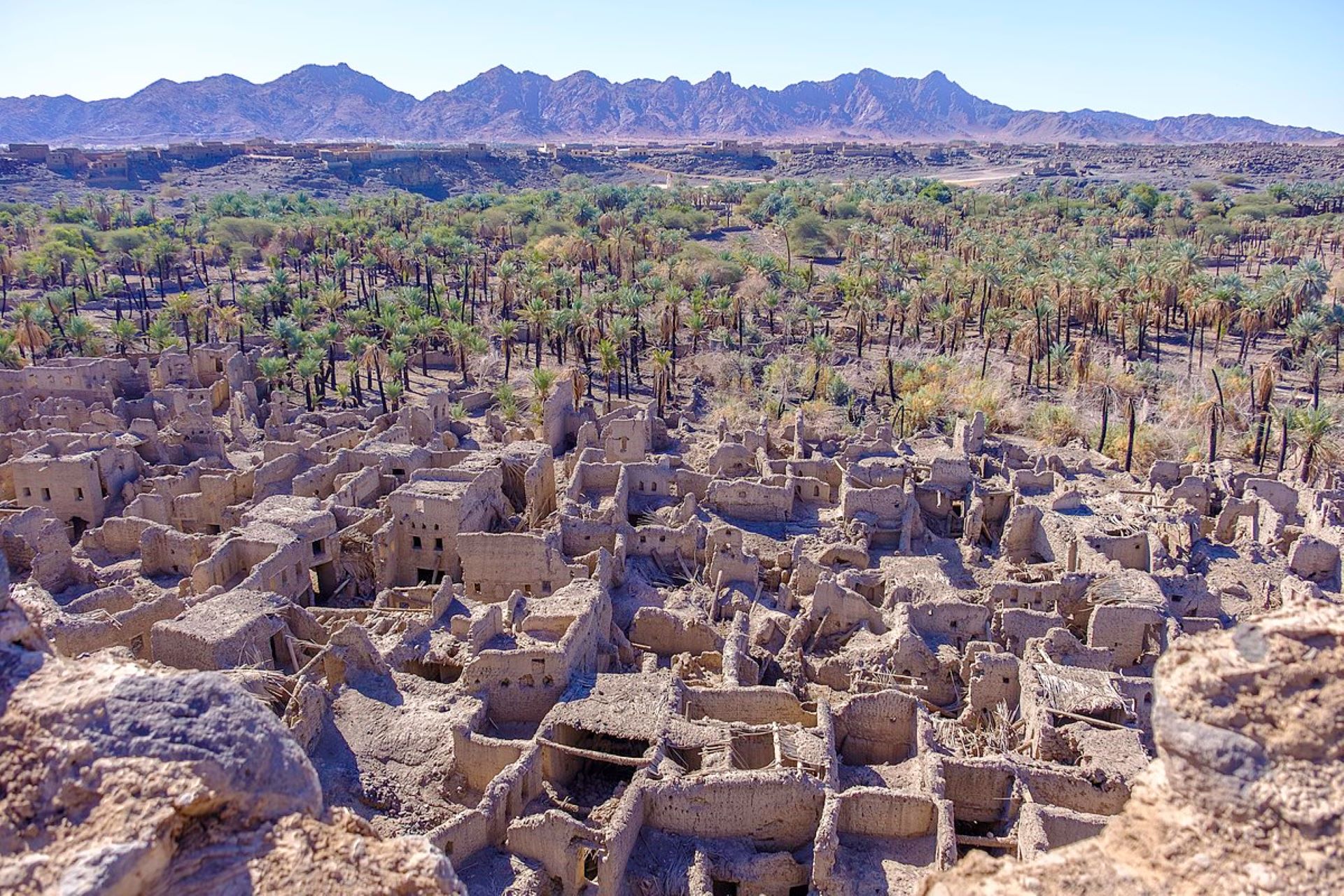 Today we move toward the last great ancient oasis of Khaybar about 200 Km south. Khaybar is surrounded by the lava fields called "harrat", the largest one, the Harrat Khaybar, is called after its name.
Today we move toward the last great ancient oasis of Khaybar about 200 Km south. Khaybar is surrounded by the lava fields called "harrat", the largest one, the Harrat Khaybar, is called after its name.
Until today Khaybar benefits from permanent water points that surface at the lowest parts of the oasis and a lush vegetation can grow naturally there. From the numerous wells a complex system of irrigation canals is still used today to water the palm trees and offer a unique sight on how an Arabian oasis could’ve looked two thousand years ago.
Khaybar appears under the name of Hibra and became famous as the last Jewish stronghold, here is what Tabari wrote about; “Khaybar was in the possession of Jews; it is the most solid of their fortress. It was composed of seven forts of different sizes, surrounded by plantations of palm trees”.
The old village of Khaybar is made of ruins of abandoned buildings whose base (probably more ancient) is built with stones and the upper part is made of mud-bricks.
Located 10 Km to the east with accessible path to; Um Jirsan Cave (Jebel Qidr) at Harrat Khaybar. 1,481m long, passages to 45m wide, with gypsum and calcite formations, many bones remain.
Continue to Medina for overnight.
-
Day 12
Medina - Yanbu
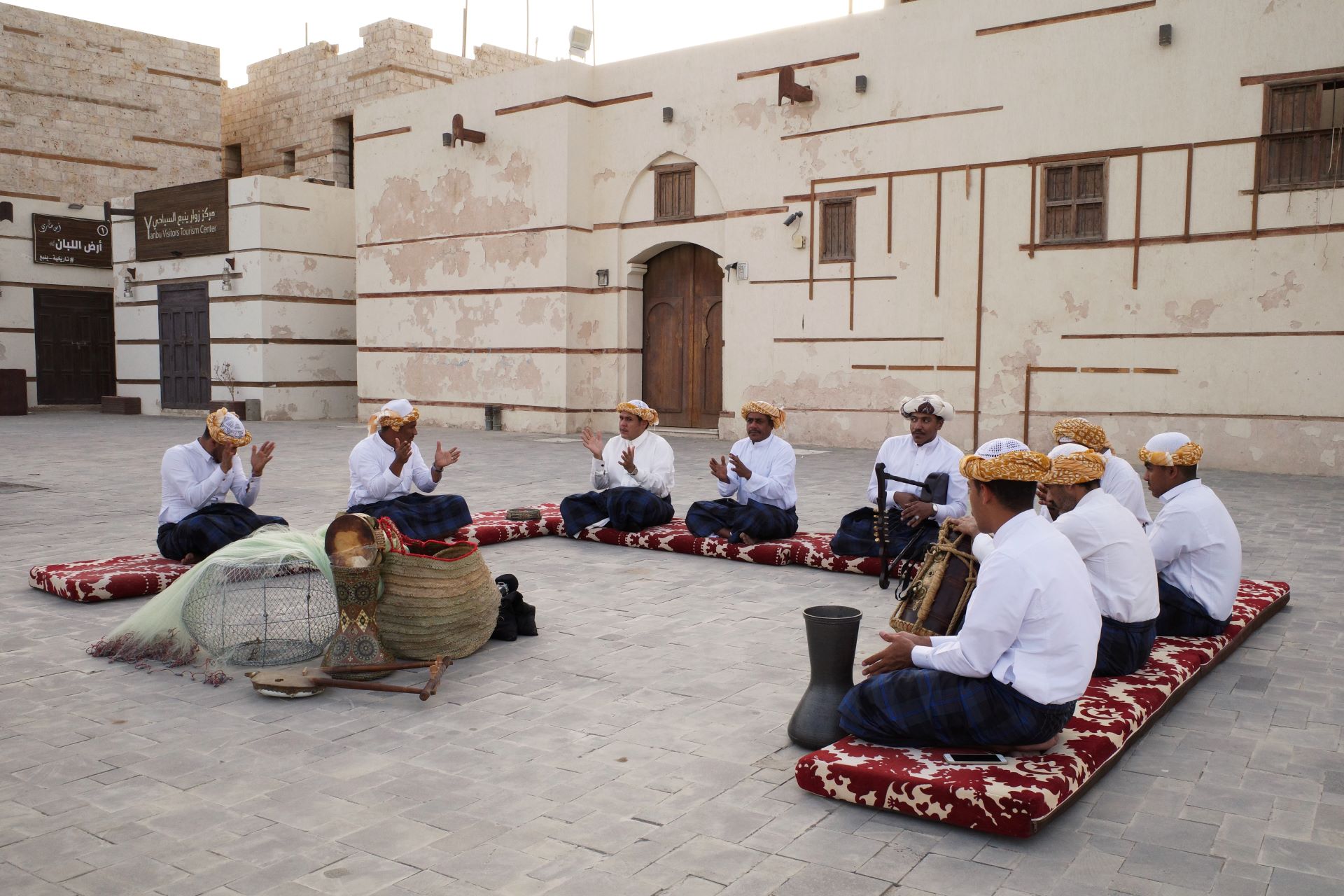 Yanbu has long been known as little more than an industrial center with a busy port, but with some of the country's best diving spots and ever more luxury resorts in the area, it is quickly transforming into a coveted vacation destination. The desert beaches are beautiful, captivating and solitary enough to make your visit a unique experience. There has never been a better time visit, as the crowds have not yet caught on to this emerging city, and travelers can still have huge expanses of pristine beach all to themselves.
Yanbu has long been known as little more than an industrial center with a busy port, but with some of the country's best diving spots and ever more luxury resorts in the area, it is quickly transforming into a coveted vacation destination. The desert beaches are beautiful, captivating and solitary enough to make your visit a unique experience. There has never been a better time visit, as the crowds have not yet caught on to this emerging city, and travelers can still have huge expanses of pristine beach all to themselves.
Overnight in Yanbu hotel.
-
Day 13
Yanbu - King Abdullah Economic City
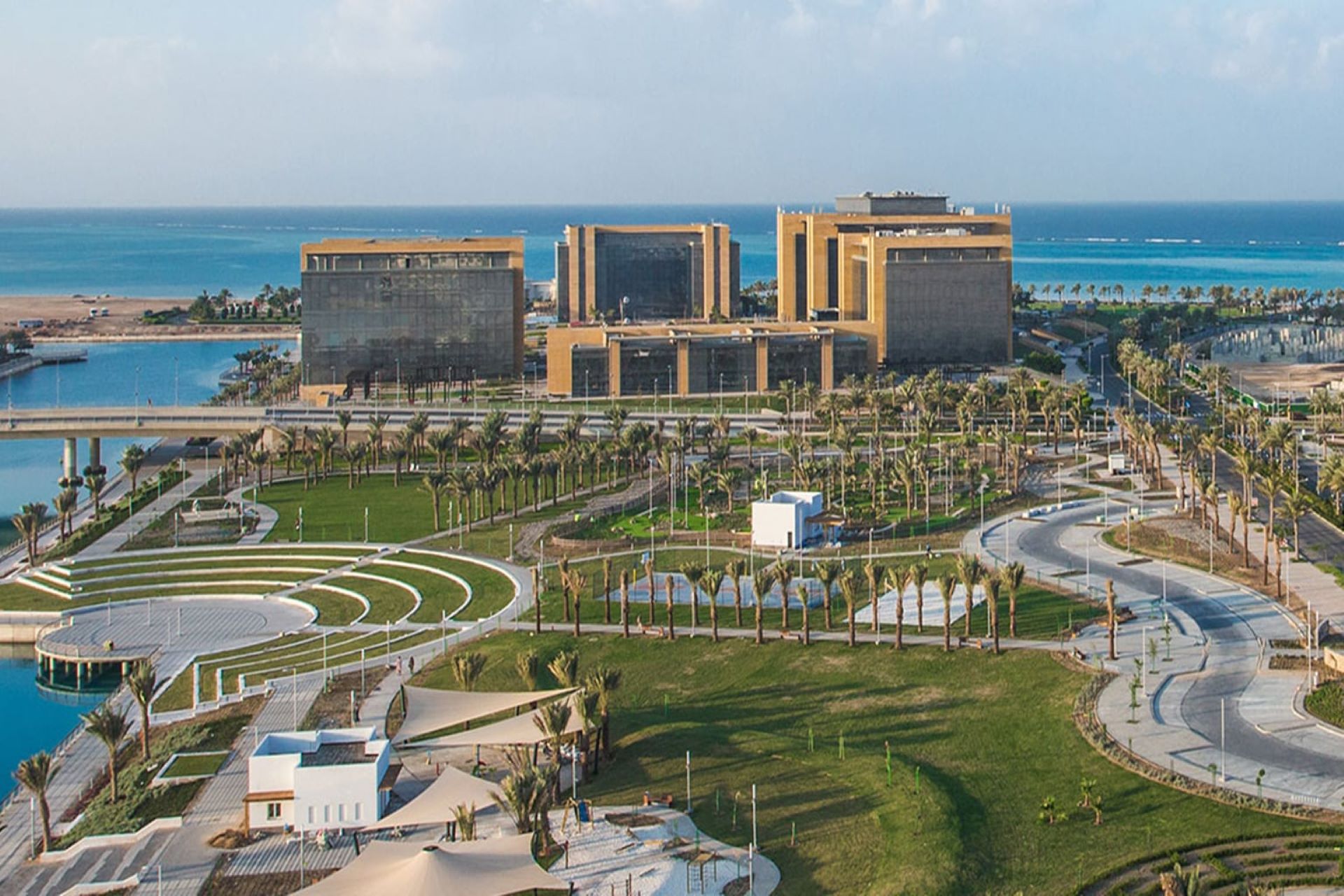 The newest city in the Kingdom of Saudi Arabia.
The newest city in the Kingdom of Saudi Arabia.
The King Abdullah Economic City, (KAEC), pronounced "cake" is one of four new cities upon which the late monarch pinned his hopes for the future of his realm once the oil runs out.
Lies one-and-a-half hour's drive north of Jeddah between the Red Sea and scrubby desert.
The new generation of Saudis expect a city that matches the modern lifestyle they have grown used to while studying abroad.
"We're building with the 65% of the population who are under 30 in mind," he explains. "And we have almost 200,000 Saudis studying abroad. Inevitably they are going to change things when they come back."
These statistics are compounded by the fact that more women than men graduate from university. These changing demographics are bringing with them new social demands that will likely revolutionize how the country develops.
At 70 sq miles KAEC will eventually be a metropolis slightly larger than Washington DC and at a cost of $100bn (£67bn).
Overnight in KAEC hotel.
-
Day 14
King Abdullah Economic City – Jeddah - Abha
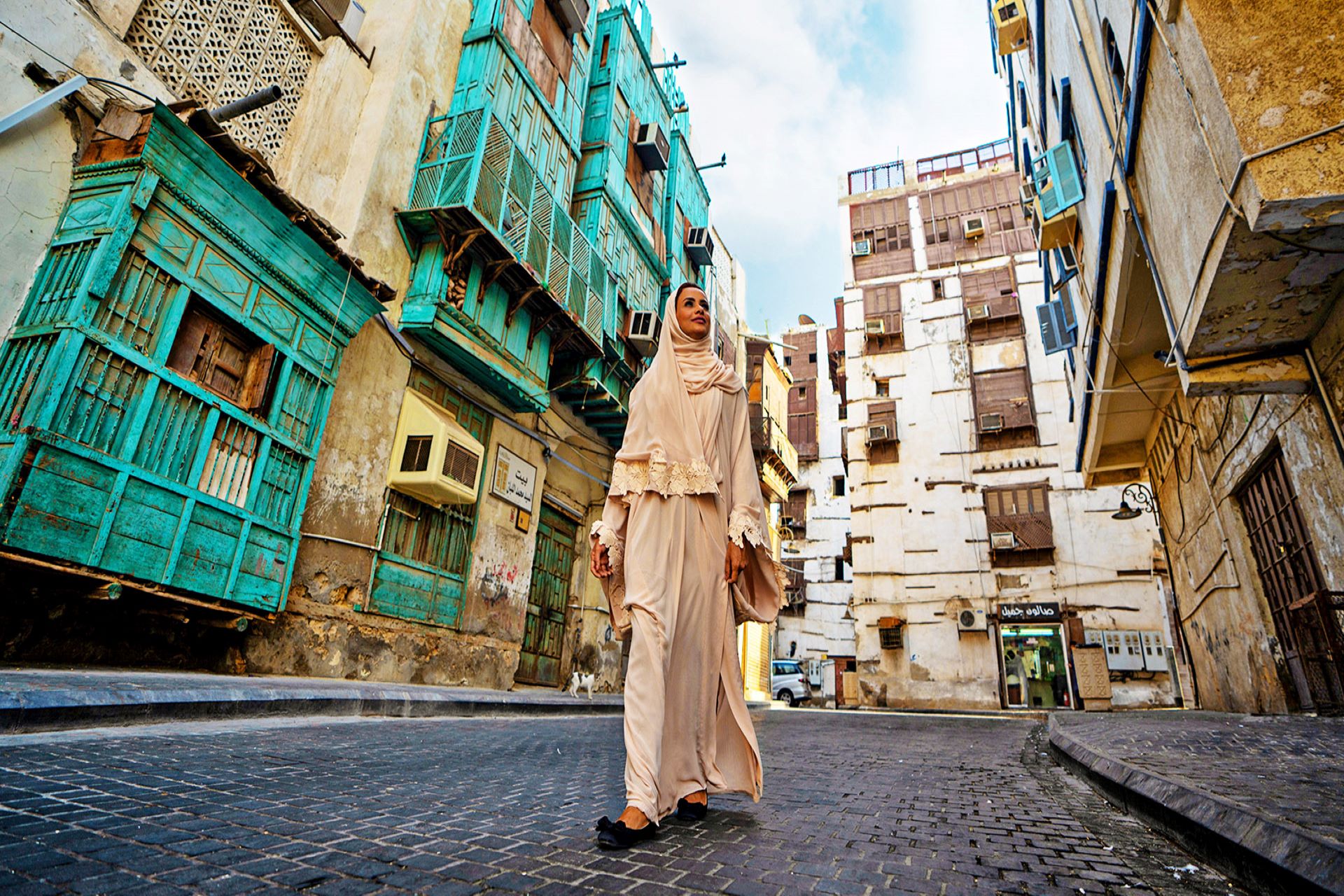 Visit to some of Jeddah’s most captivating old Ottoman houses. The old quarter is a UNESCO World Heritage Site and is known for its coral-built houses. The Nasif house is one of the few historic buildings that have been restored and now serve as a museum. You walk further through the old town and visit the Al Alawi souq, the market that winds through the old neighborhoods and where products such as incense, jewelry, coffee and clothing are sold. The art collection of Abdulraouf Khalil is exhibited in the Al Tayebat museum. The museum includes items from the pre-Islamic period, furniture and traditional clothing from different regions of the country.
Visit to some of Jeddah’s most captivating old Ottoman houses. The old quarter is a UNESCO World Heritage Site and is known for its coral-built houses. The Nasif house is one of the few historic buildings that have been restored and now serve as a museum. You walk further through the old town and visit the Al Alawi souq, the market that winds through the old neighborhoods and where products such as incense, jewelry, coffee and clothing are sold. The art collection of Abdulraouf Khalil is exhibited in the Al Tayebat museum. The museum includes items from the pre-Islamic period, furniture and traditional clothing from different regions of the country.
Continue to Jeddah Airport to catch our flight to Abha.
Overnight in Abha Hotel.
-
Day 15
Abha
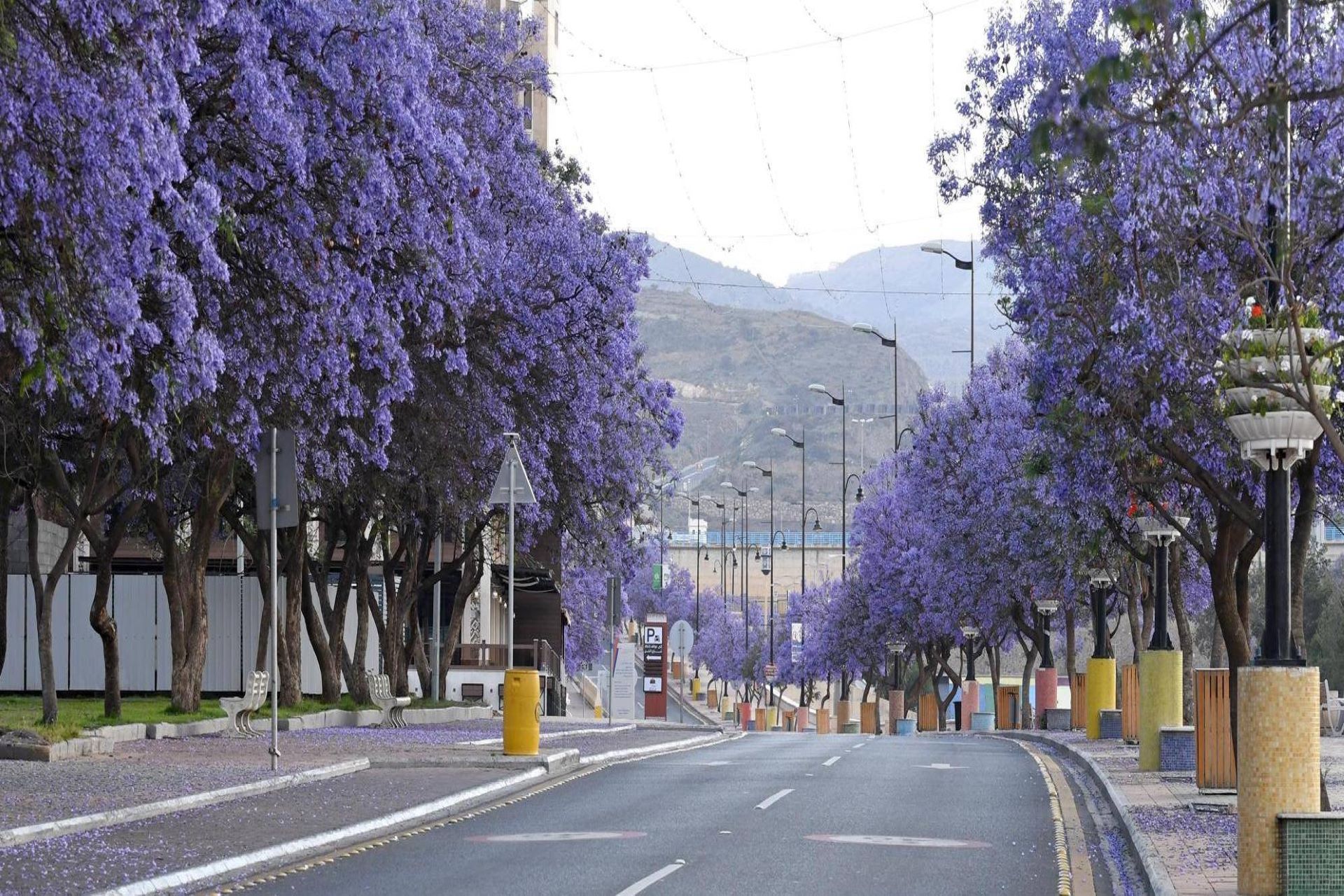 In the morning we fly Abha, the capital of the province of Asir in the southwest of the country. With a location at 2200 meters, there is a milder climate in Abha than in other parts of the country. Because rain can fall all year round, the city is also a popular destination for Saudi tourists. Another advantage of the climate and altitude is that soil in Asir is very fertile. The tastiest fruit and the best grain and maize of the entire country would be grown there. Abha has long been able to resist external influences and thus its own architectural style and identity remains intact. Especially in the outskirts of Abha you can see centuries-old mud and stone houses with striking white decorations around the top. The population of Abha differs from other parts of the country. For example, the women dress with abayas decorated with detailed embroidery and the men sometimes wear colorful pants. The jewelry that the women wear also reflects the social status. Today there is time to explore Abha and visit a local museum.
In the morning we fly Abha, the capital of the province of Asir in the southwest of the country. With a location at 2200 meters, there is a milder climate in Abha than in other parts of the country. Because rain can fall all year round, the city is also a popular destination for Saudi tourists. Another advantage of the climate and altitude is that soil in Asir is very fertile. The tastiest fruit and the best grain and maize of the entire country would be grown there. Abha has long been able to resist external influences and thus its own architectural style and identity remains intact. Especially in the outskirts of Abha you can see centuries-old mud and stone houses with striking white decorations around the top. The population of Abha differs from other parts of the country. For example, the women dress with abayas decorated with detailed embroidery and the men sometimes wear colorful pants. The jewelry that the women wear also reflects the social status. Today there is time to explore Abha and visit a local museum.
Overnight in Abha hotel.
-
Day 16
Abha Heritage
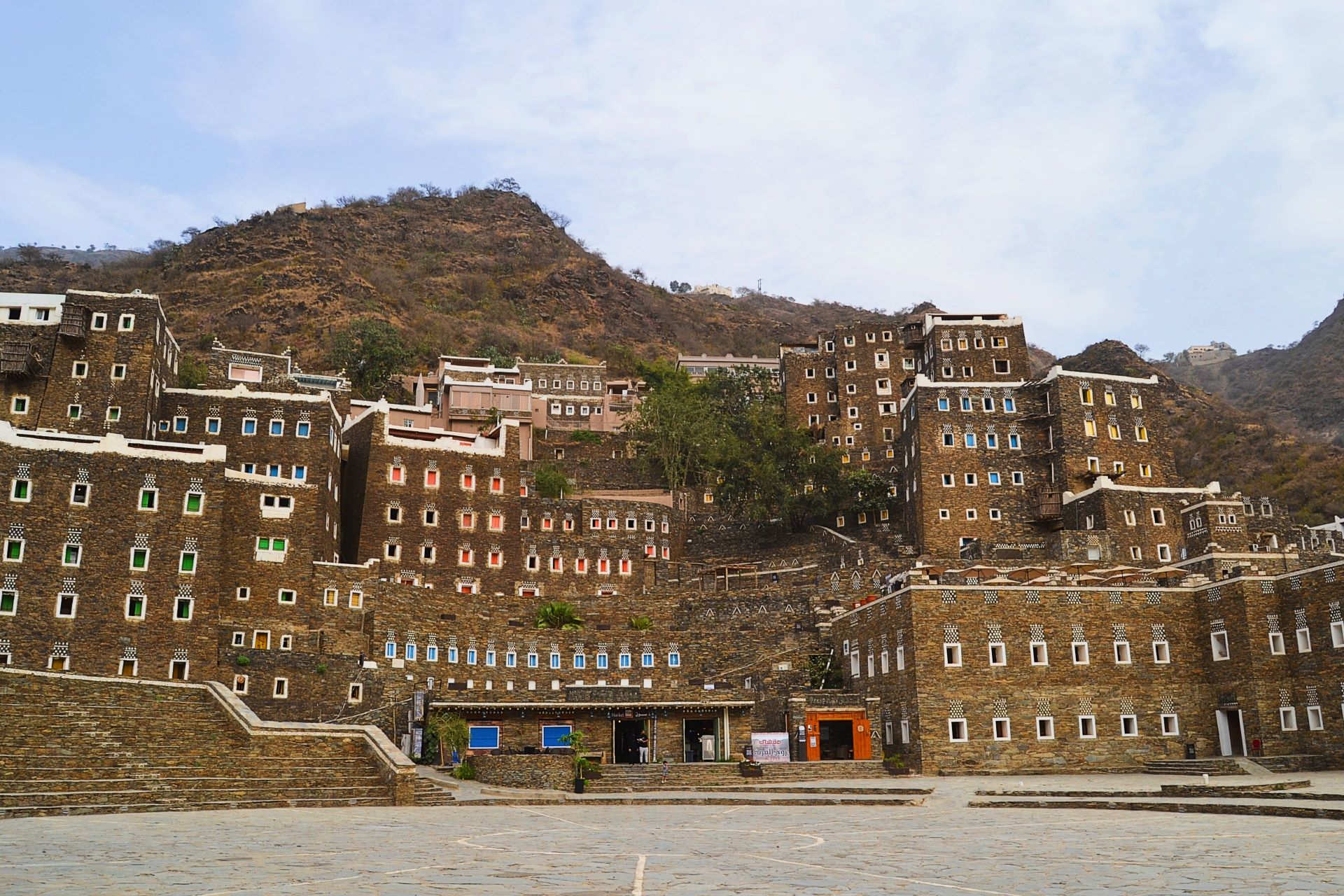 We start the day by visiting the local market where you can find all the famous delicacies from the region. Just outside Abha is Al Soodah Park, a beautiful nature reserve that is part of the Asir Mountains. The highest mountain in Saudi Arabia, the Jabal Soodah, lies at 2995 in the park. With all the greenery, the different terraces and special vegetation, it is a unique area in Saudi Arabia, a country that is mainly known for its desert and high temperatures. Then you will continue to the wonderful UNESCO World Heritage village of Rijal Al Maa. which has been an important stopping place for centuries for travelers from the Levant and Yemen to Mecca and Medina. About 60 buildings are characterized by white windows and eaves.
We start the day by visiting the local market where you can find all the famous delicacies from the region. Just outside Abha is Al Soodah Park, a beautiful nature reserve that is part of the Asir Mountains. The highest mountain in Saudi Arabia, the Jabal Soodah, lies at 2995 in the park. With all the greenery, the different terraces and special vegetation, it is a unique area in Saudi Arabia, a country that is mainly known for its desert and high temperatures. Then you will continue to the wonderful UNESCO World Heritage village of Rijal Al Maa. which has been an important stopping place for centuries for travelers from the Levant and Yemen to Mecca and Medina. About 60 buildings are characterized by white windows and eaves.
Overnight in Abha hotel.
-
Day 17
Abha – Jizan – Farasan Island
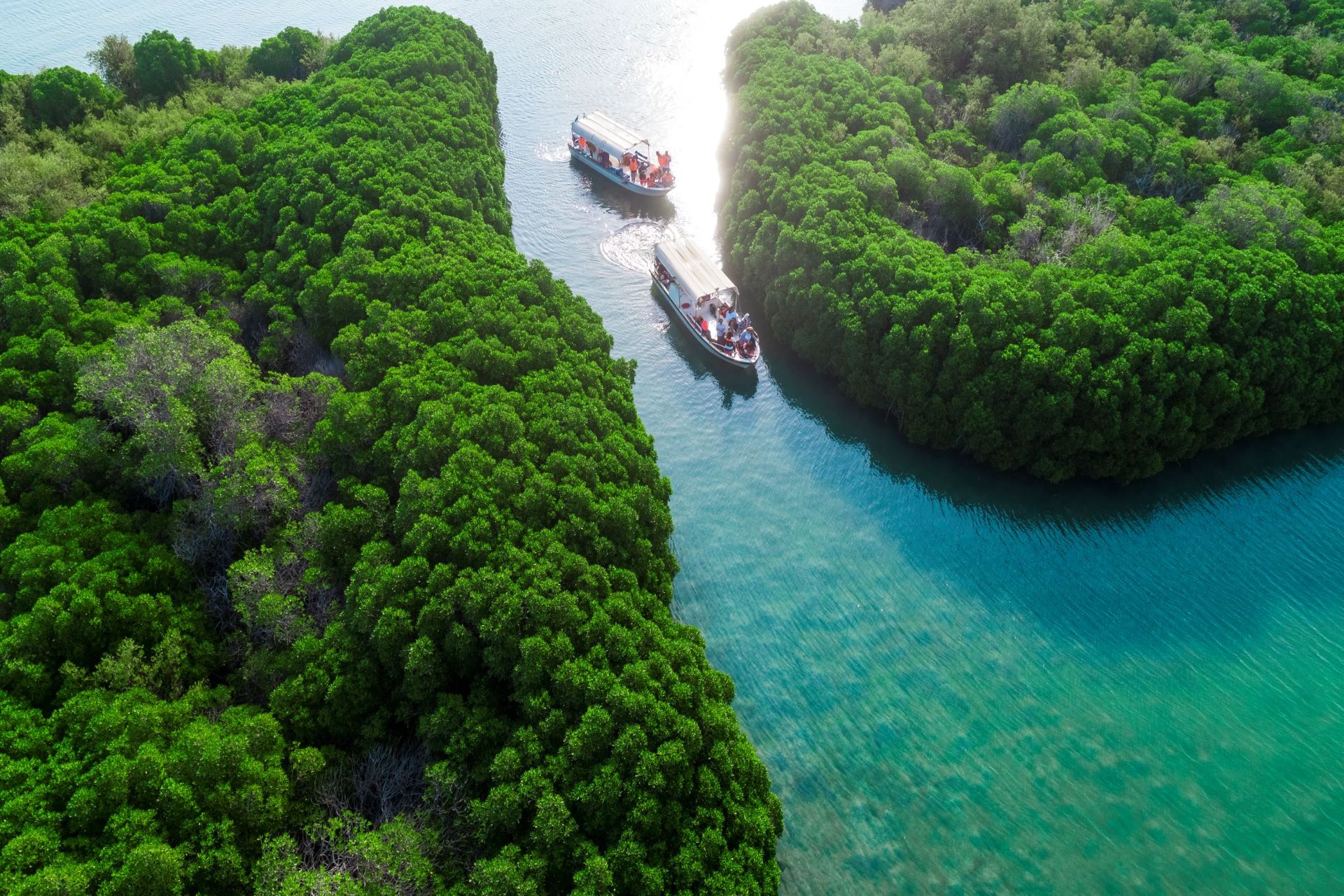 Today we drive south to Jizan Harbor to catch our ferry boat to Farasan Island, city tour before checking in at hotel.
Today we drive south to Jizan Harbor to catch our ferry boat to Farasan Island, city tour before checking in at hotel.
Just off the coast of the southwestern part of Saudi Arabia, about 40km offshore from the city of Jizan in the Red Sea.
Farasan Islands an archipelago with 84 corral islands, with only three of the islands being permanently inhabited.
The archipelago was declared “Farasan Island Marine Sanctuary” in 1996 and covers approximately an area of 3,310 km2
Beit Al Refai house is a particularly spectacular house on the main island dating back to 1922. The house was owned by one of the wealthiest people on the island, Al Refai was a well-known pearl merchant, and his house is considered to be the archetype of Farasani architecture.
The house is built with coral stones and plastered with gypsum, and the windows are beautifully engraved ornaments. The house is like no other house in Saudi Arabia, but time has not been gentle with this beautiful house and its now in desperately in need of repair and protection.
Overnight in Farsan.
-
Day 18
Farasan Island
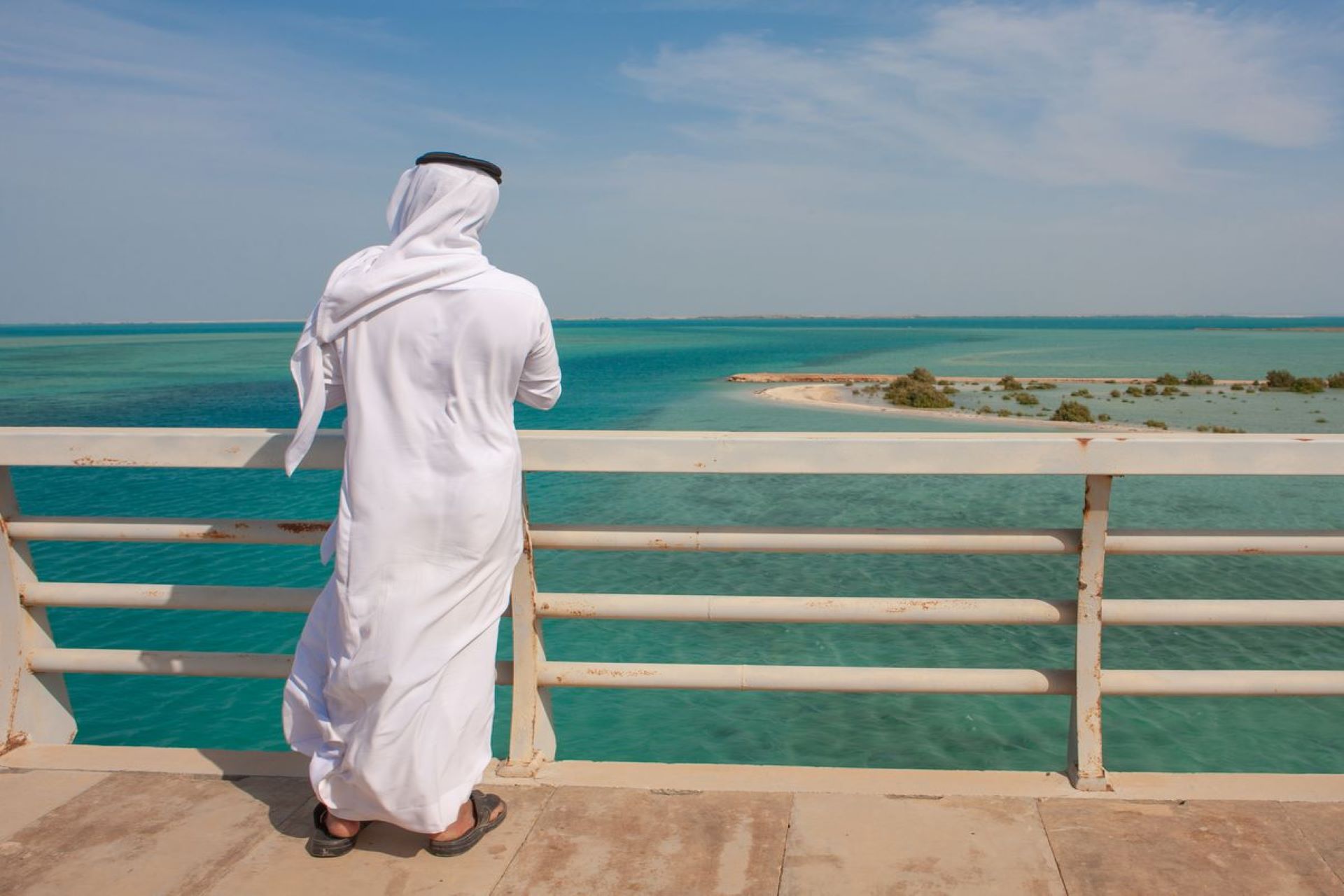 Full day Islands boat cruise,
Full day Islands boat cruise,
Sail to magical islands, open time at the island for swimming, snorkeling, relaxing, and fishing, traditional lunch from catches of the sea, continue to visit the birds island then depending on tide situation you might visit the mangrove forest, sail back to Farasan island.
-
Day 19
Farasan Island
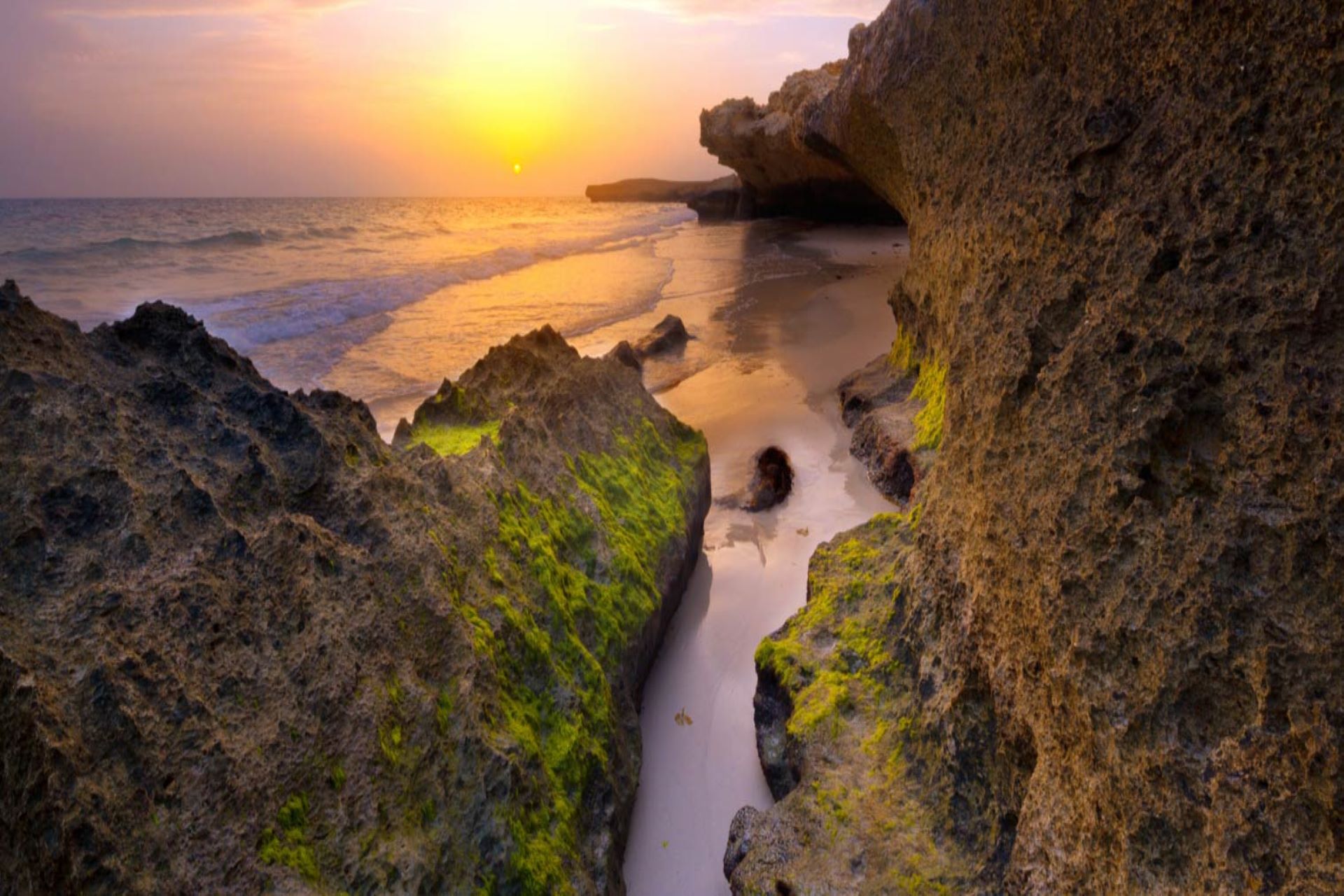 Free day to enjoy the island beach.
Free day to enjoy the island beach.
Sail to the German fortress island then continue to Qummah island, return to Farasan island.
On land is the “star” of the archipelago a Gazelle that´s even named after the Farasan archipelago, the Farasan Gazelle which only live on the biggest island, but are unfortunately on the brink of extinction due to uncontrolled hunting of these animals.
And there´s now believed to be less than 700 Farasan Gazelle remaining.
-
Day 20
Farasan Island – Jizan - Wadi Lajab - Jizan
 After breakfast we sail back to main land of Jizan city.
After breakfast we sail back to main land of Jizan city.
The miracle of Sarawat Mountains
Jebel Qahar is a massif located 80 kilometers northeast of Jizan City that peaks slightly above 2000 meters above sea level. In addition to the wonderful scenery of green mountains Jebel Al-Qahar hosts another jewel of Jizan Province: The Wadi Lajab.
The valley of Wadi Lajab is in fact a canyon about 5 kilometers long and from 3 to 30 kilometers wide but given that its steep sides are as high as 300 meters in some parts the narrow and incredibly deep the valley offers some quite dramatic viewpoints.
But the most incredible feature of Wadi Lajab is the fact that it delivers fresh water more regularly than any other wadi in Saudi Arabia. The stream that runs at the bottom of the canyon creates mid-sized waterfalls and the numerous ponds are deep enough to host fish... and travelers who want to enjoy a bath!
Back to Jizan for overnight.
-
Day 21
Jizan – Riyadh -Edge of the World
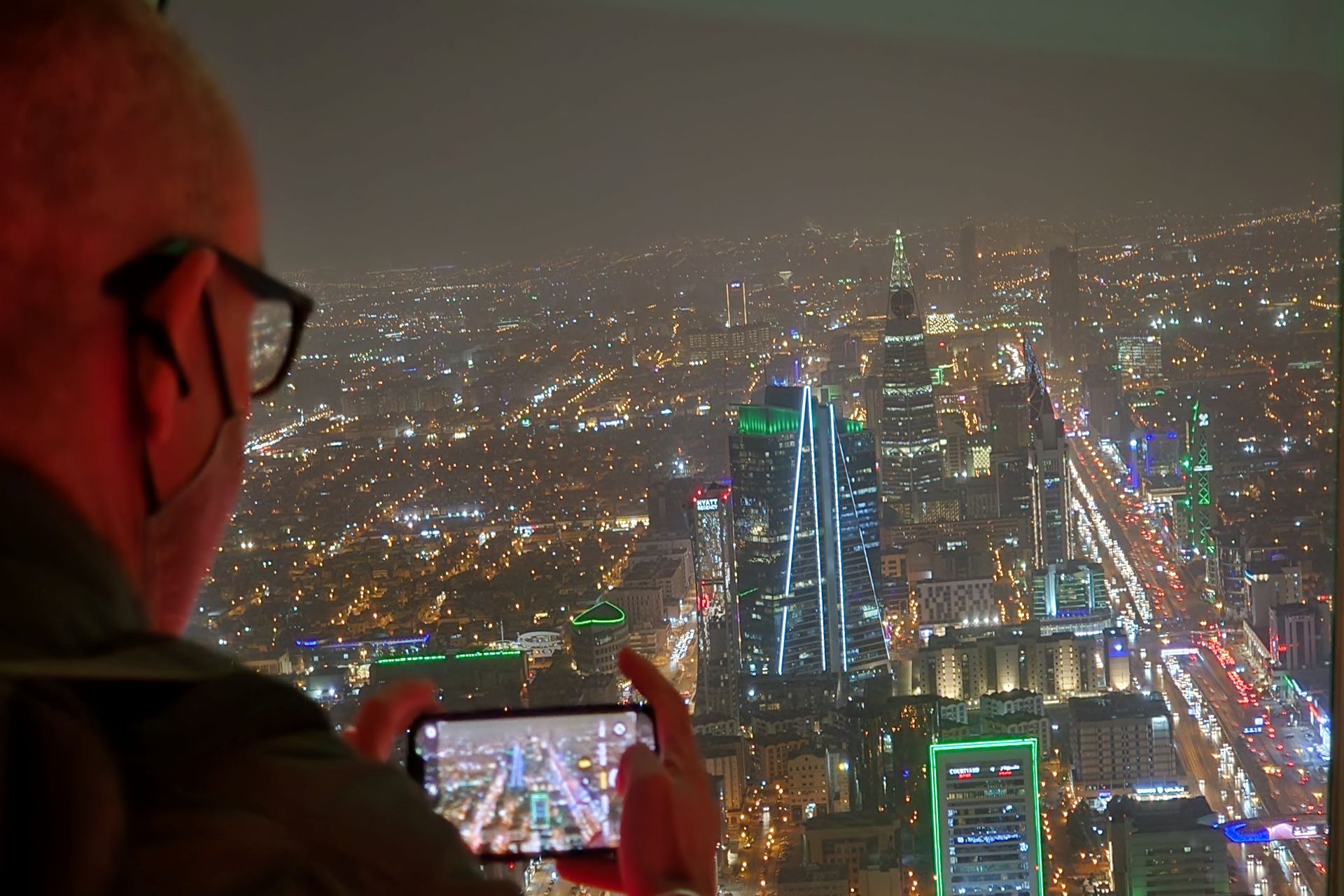 Today we fly to Riyadh, check in at our hotel.
Today we fly to Riyadh, check in at our hotel.
In the afternoon we drive on Makkah Road towards old Camel Caravan Trail, where one can enjoy walk on old camel tracks which is always very fascinating.
Once again will start our drive to the Edge of the World, one-way drive is approx. 120 Kms from Riyadh along the Tuwaiq Escarpment on both paved road and gravel access.
Definitely worth a visit and a perfect day trip because of the spectacular scenery and an unforgettable experience. What makes Edge of the World special is a rock-framed "window" with a wonderful view of the plateau and the view from them looks “endless”, in other words, it seems as though you are standing on the Edge of the World, and only a flat plain can be seen in the horizon as far as the eye can reach. Sunset view at this point is always very fascinating. We shall drive back to Riyadh after sunset.
Overnight in Riyadh hotel.
-
Day 22
Riyadh - Departure
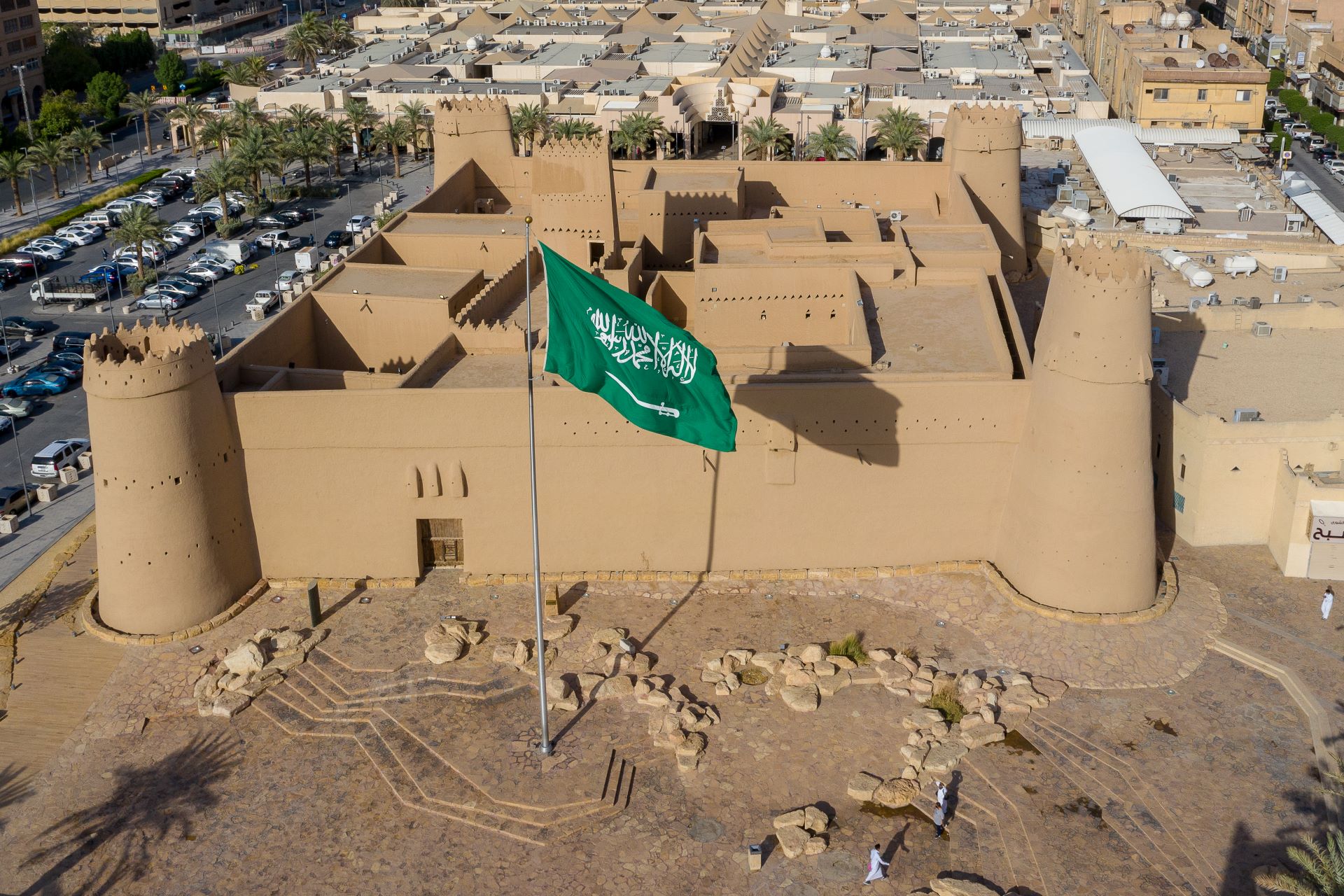 Transfer to Airport.
Transfer to Airport.
End of Tour and departure.
Activities
- Adventure
- Exploring
Select Day
Following things are included
- All transfer and transportation with A/C bus or car.
- All nights’ accommodation F/B at selected category hotel.
- English speaking tour leader/driver.
- All entrance fees in Saudi as listed in itinerary.
- All Taxes.
- All Dinners
Following things are Excluded
- Visa cost to Saudi.
- All Lunches.
- Drinks during meals.
- Domestic Flight.
- Tips.
- Any personal expenses.
- Anything not mentioned in the Include items.


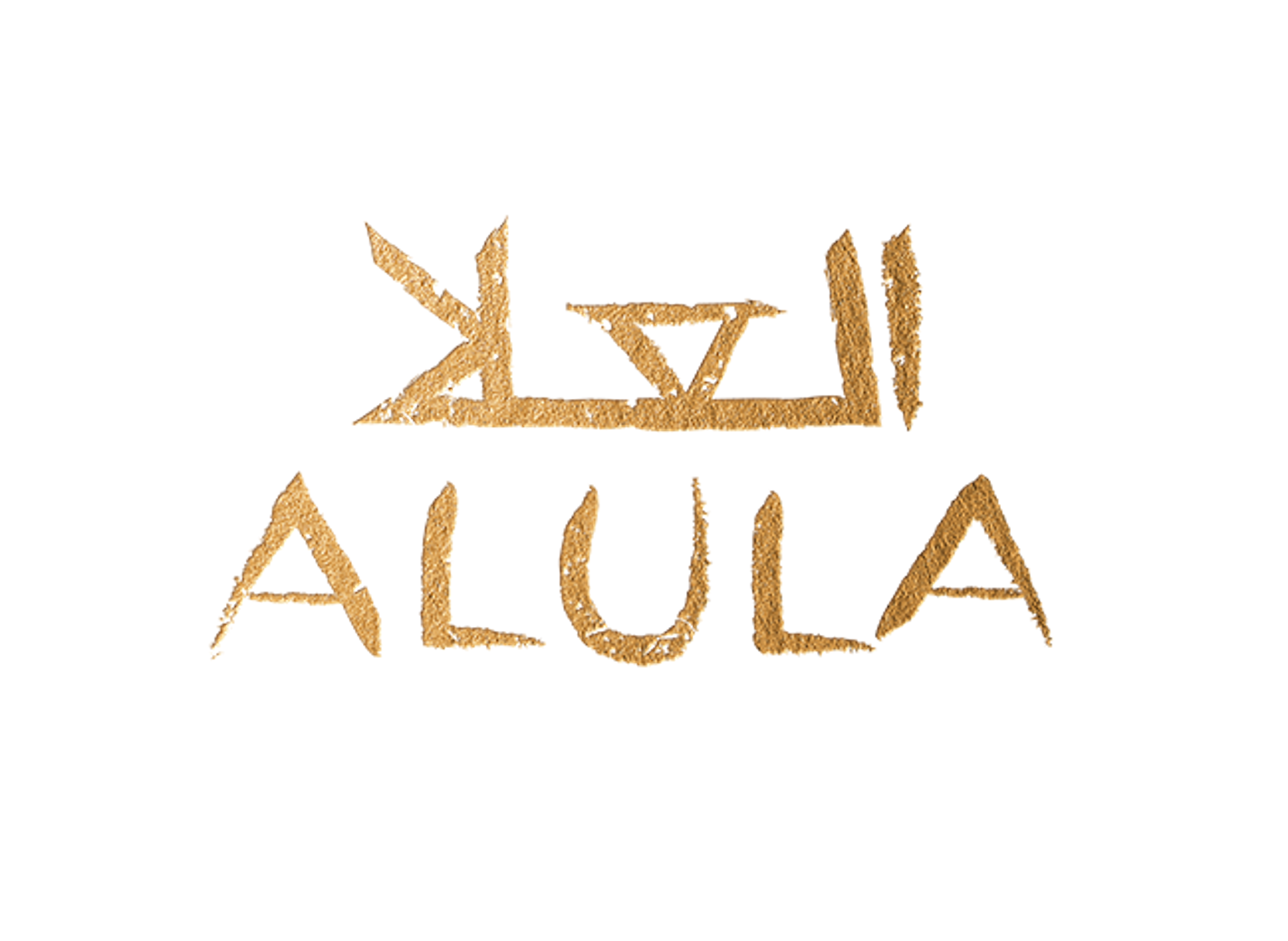
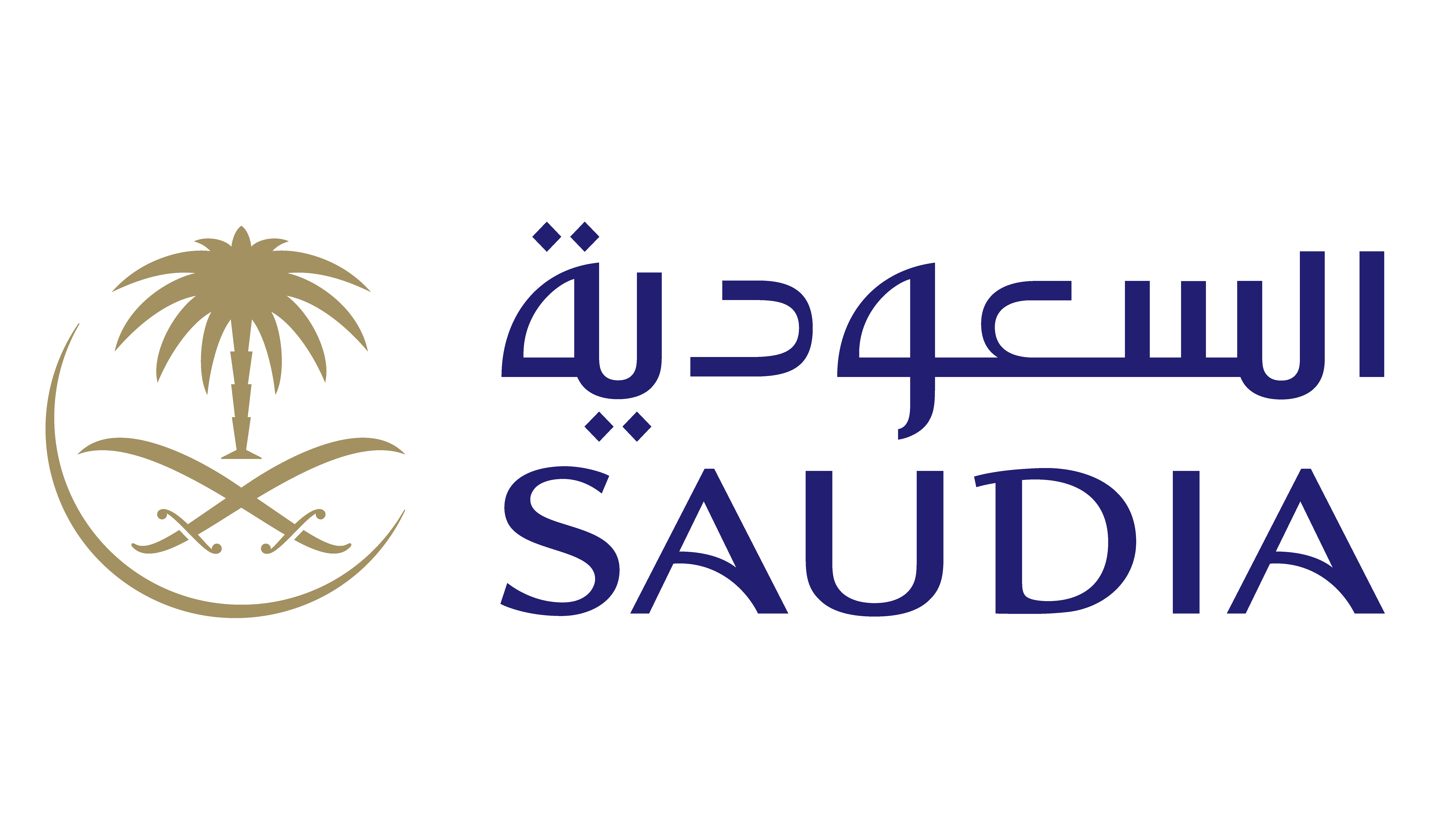


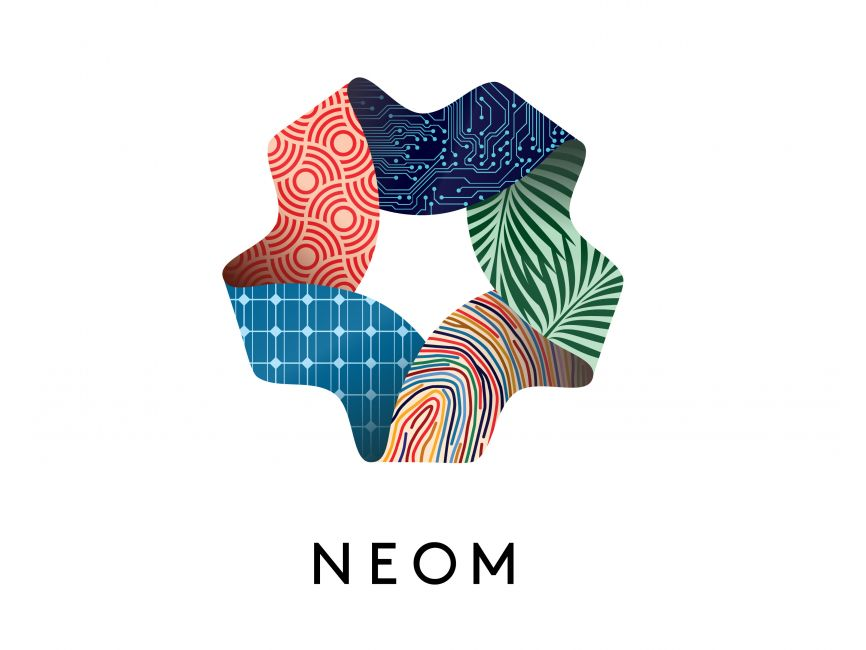
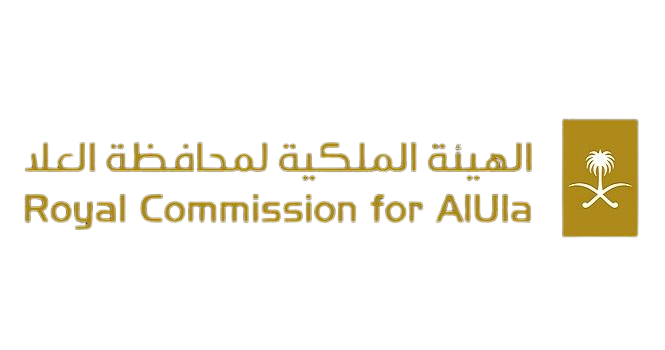
1021517daeb271a3064bfde286be5f0e12e417.jpg)
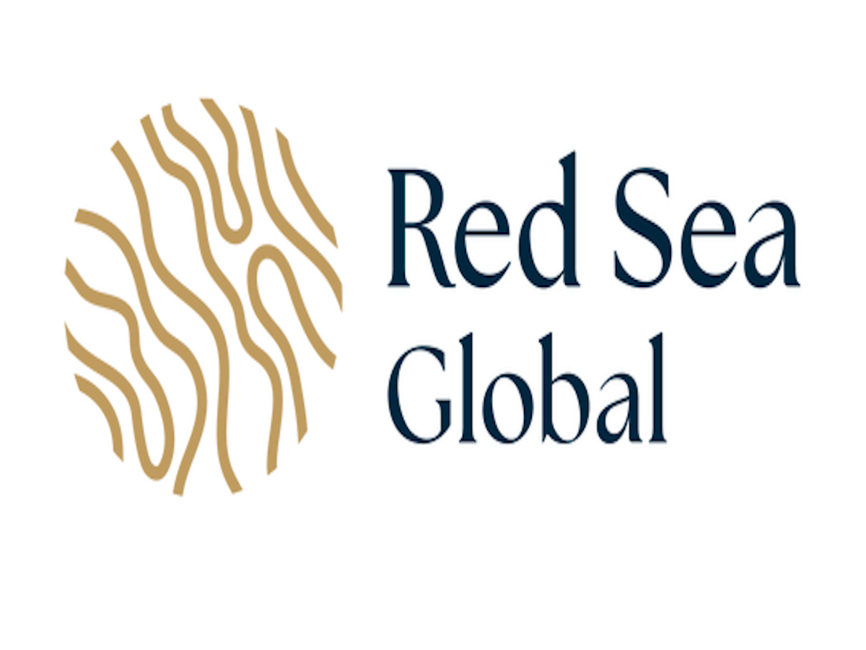
9573769fae268a382f75cde81f59603e9b35d.png)

